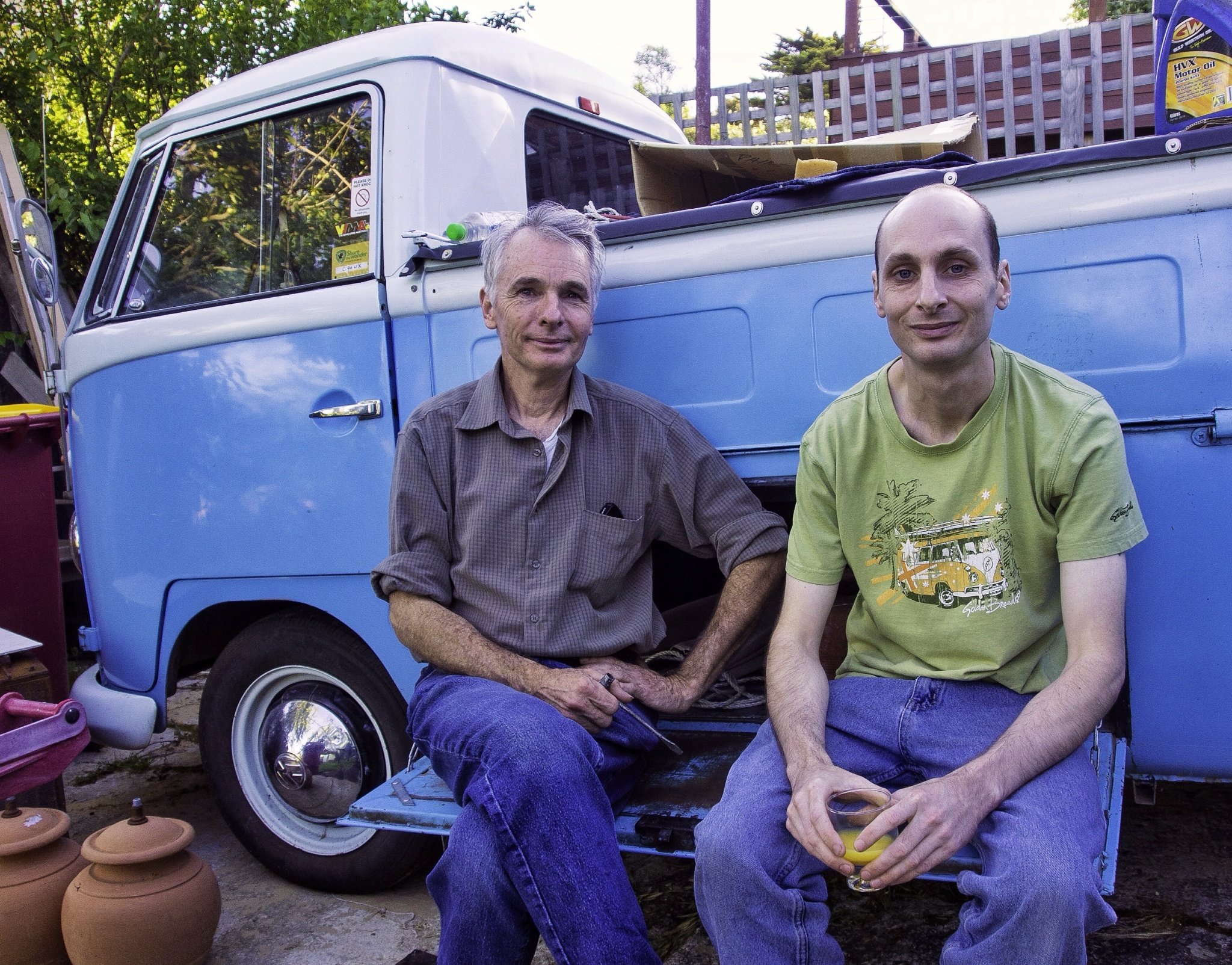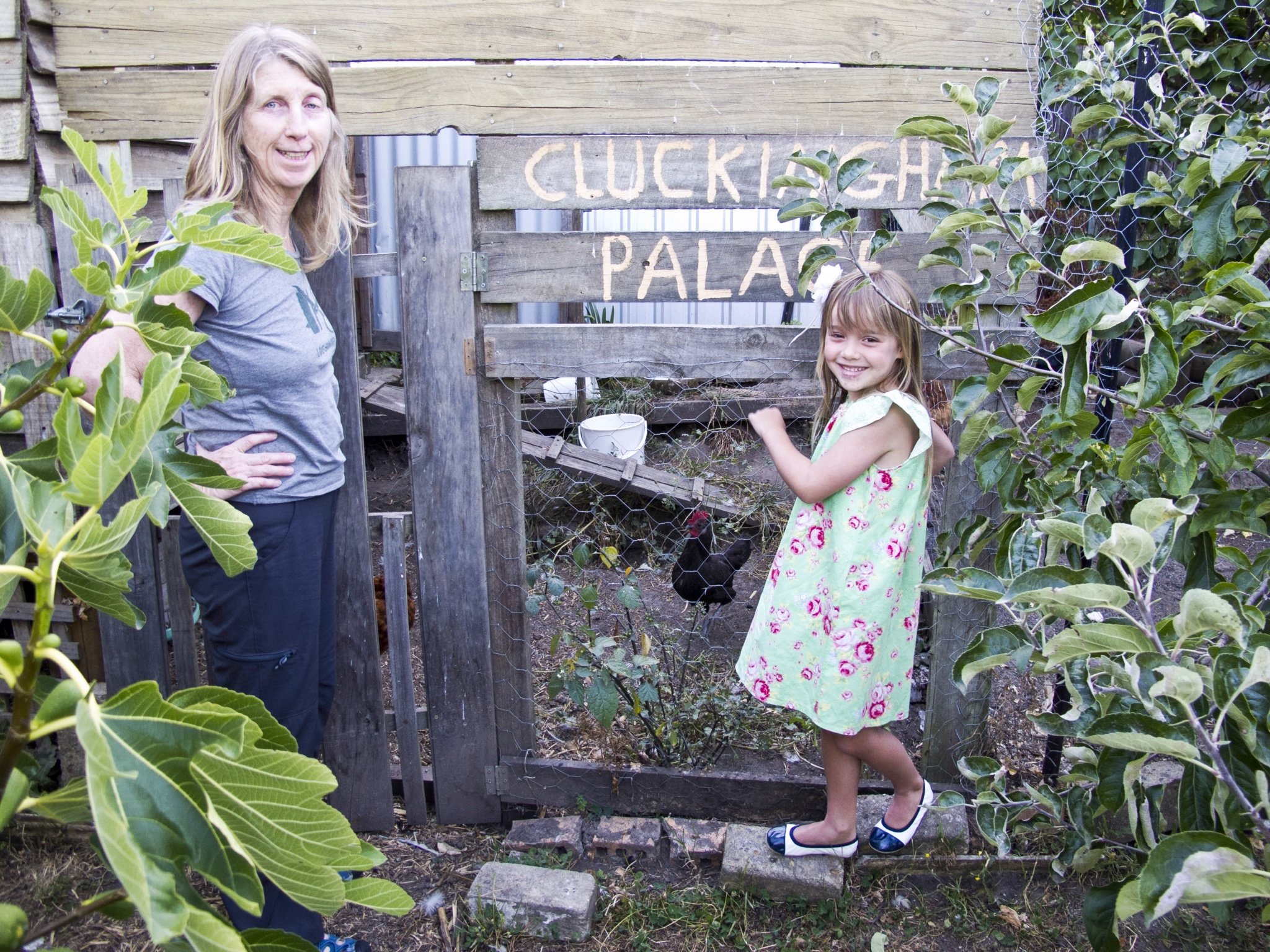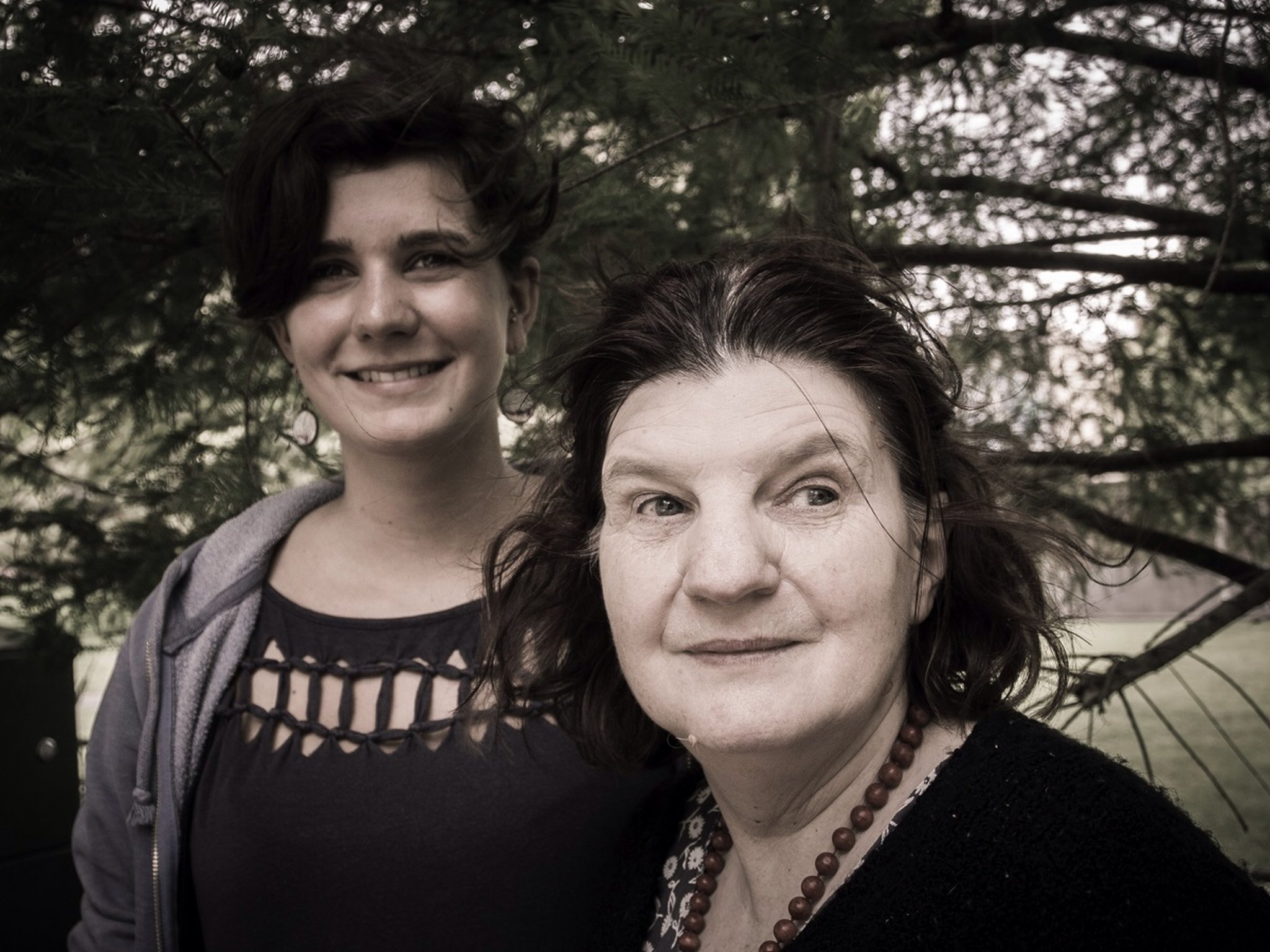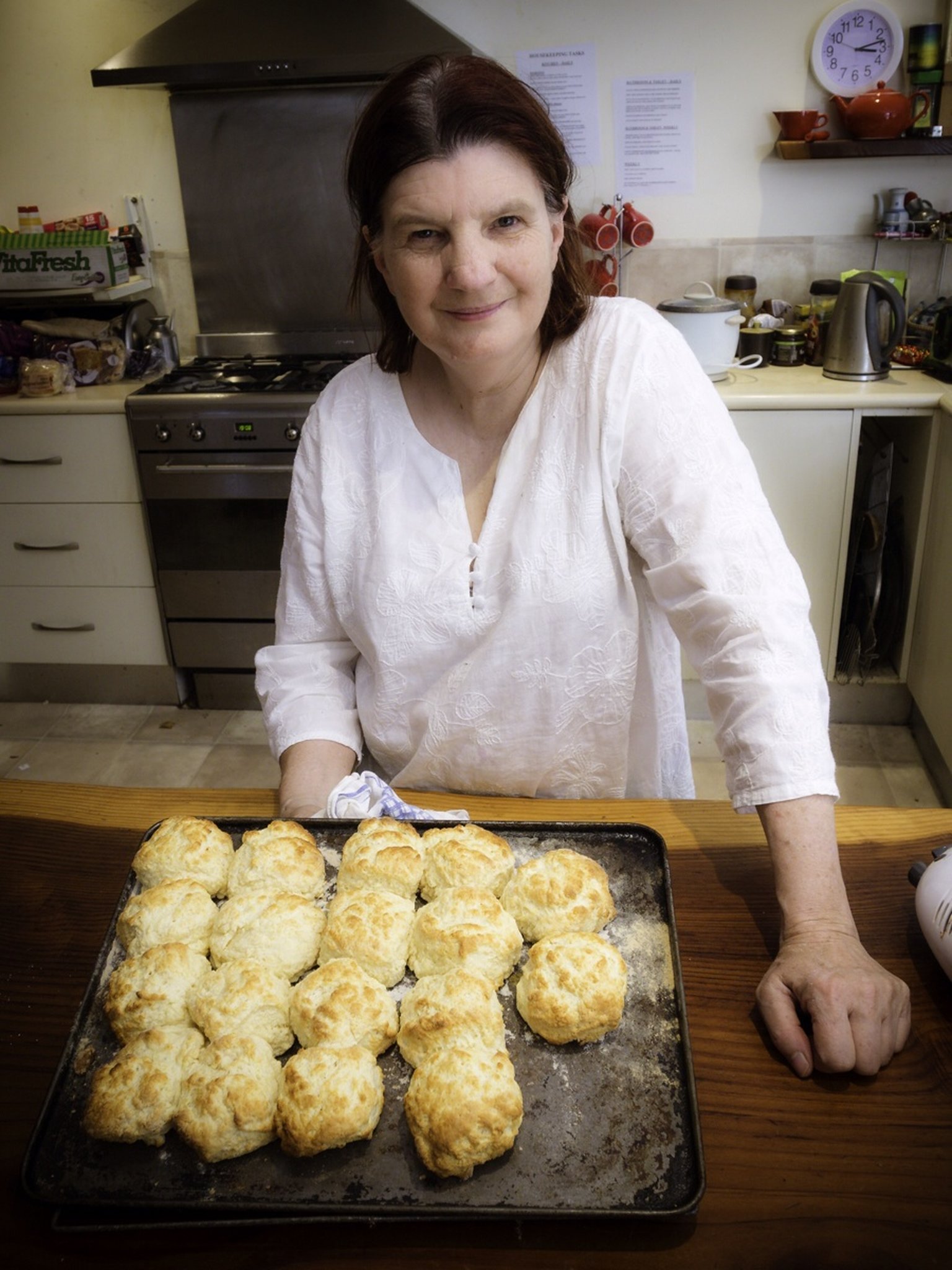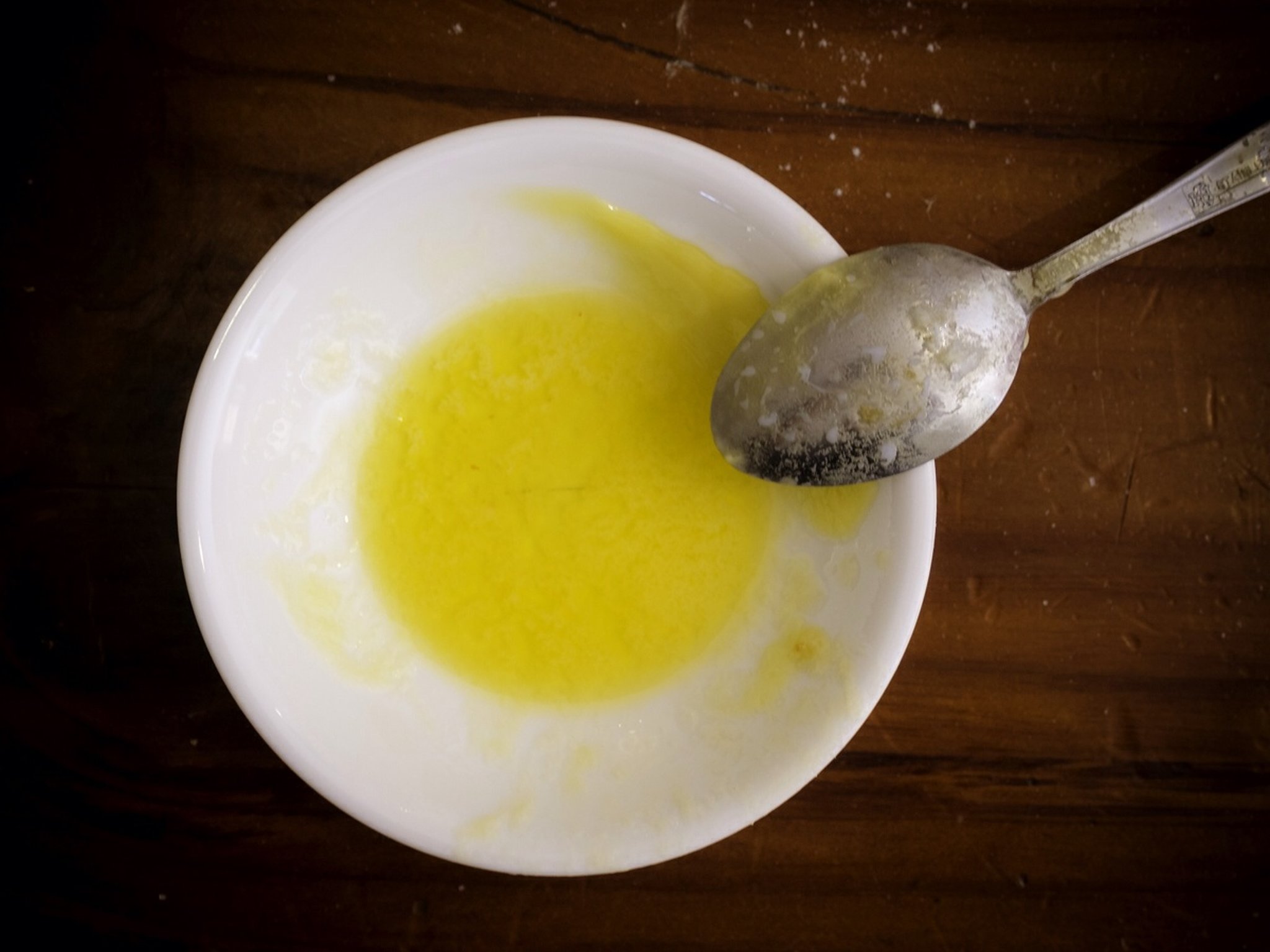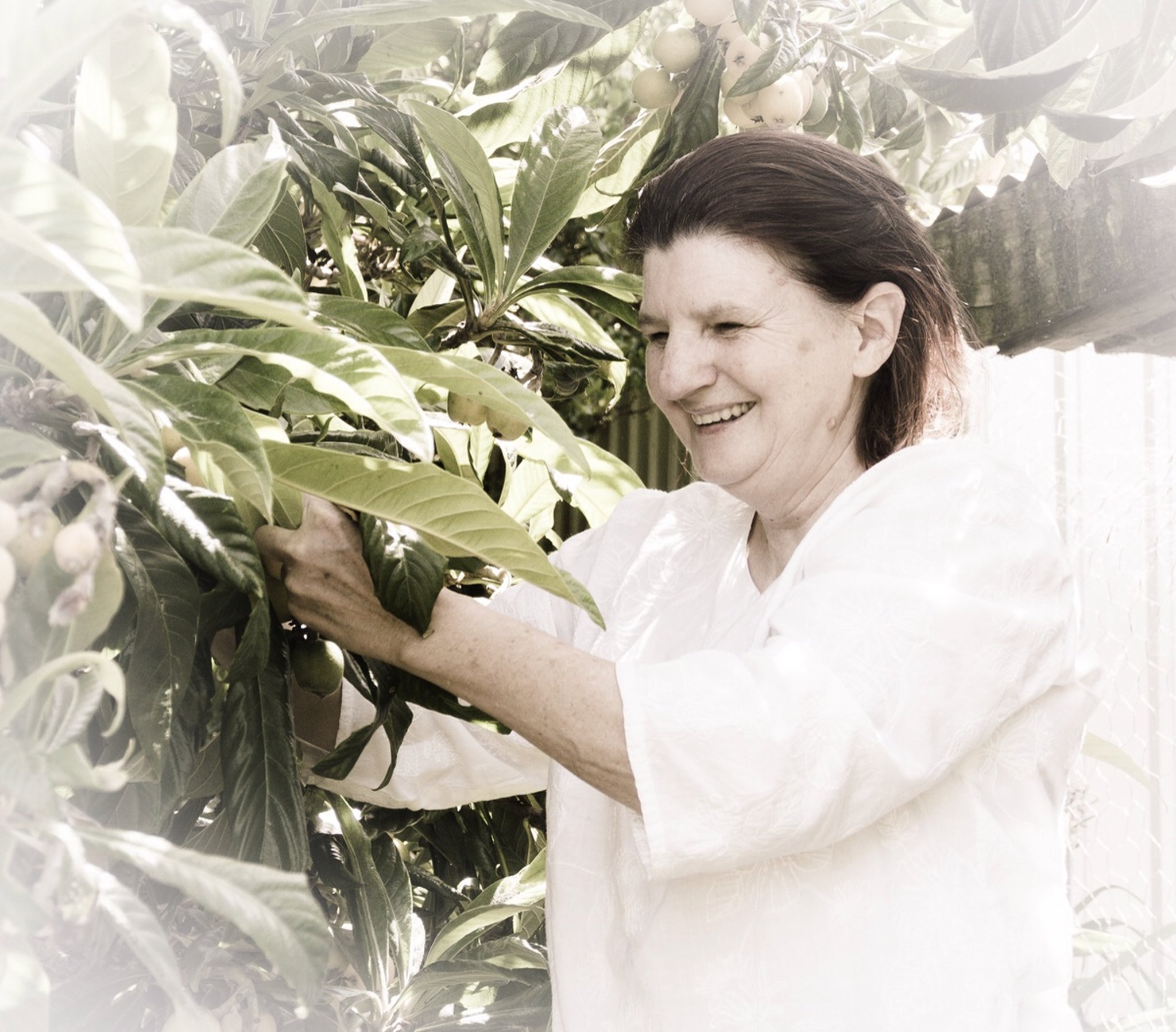

Russ Grayson
Food... and a life convivial
Food, friends and fun is Yvonne's recipe
THE HARVEST
December, and high on the ridge above Launceston it’s loquat harvest time. That's what Yvonne and Fanny were up to that day I visited.
Loquat (Eriobotrya japonica) is a yellow soft fruit, a stone fruit. It is a member of the rose family, Rosaceae, and is also known as the Japan or Japanese plum and Japanese medlar. Like many of our other fruits, grains and vegetables it was globalised in ancient times from its centre of diversity, southeast China. From there it spread to southeast Asia (where there may be up to 800 varieties according to Perdue University sources), India, Australia, New Zealand, South Africa and, presumably with Chinese immigrants, to Hawaii. Now, here it was on the steep slopes of West Launceston.
It is a fruit that has been improved in size and taste through crossbreeding by traditional farmers, as have many of our fruits. In this, it is as much a human artefact as a natural one.
Loquat has a slightly bitter taste. It grows in a range of climates from tropical to cool temperate and is edible raw and can be made into a jam. That's what Yvonne and Fanny were about to do.
December, and high on the ridge above Launceston it’s loquat harvest time. That's what Yvonne and Fanny were up to that day I visited.
Loquat (Eriobotrya japonica) is a yellow soft fruit, a stone fruit. It is a member of the rose family, Rosaceae, and is also known as the Japan or Japanese plum and Japanese medlar. Like many of our other fruits, grains and vegetables it was globalised in ancient times from its centre of diversity, southeast China. From there it spread to southeast Asia (where there may be up to 800 varieties according to Perdue University sources), India, Australia, New Zealand, South Africa and, presumably with Chinese immigrants, to Hawaii. Now, here it was on the steep slopes of West Launceston.
It is a fruit that has been improved in size and taste through crossbreeding by traditional farmers, as have many of our fruits. In this, it is as much a human artefact as a natural one.
Loquat has a slightly bitter taste. It grows in a range of climates from tropical to cool temperate and is edible raw and can be made into a jam. That's what Yvonne and Fanny were about to do.
As day turns towards evening Yvonne takes a break under her pear tree. Such moments of rest are rare indeed for this busy woman.

I THINK IT WAS the summer of 1969 that I met her in a bookshop on Goulburn Street, Sydney. The world seemed young then. So did we.
Now, decades later and in a city distant from that where we met, Yvonne has become a woman of many talents and has returned to her old profession — that of cook. That's what she was when we met, and I recall picking her up at Central Station in those days, after she finished her travels of several days at a time to NSW's far north coast. Yvonne, you see, worked for NSW railways catering on the North Coast Express— yes, railway food.
Now, decades later and in a city distant from that where we met, Yvonne has become a woman of many talents and has returned to her old profession — that of cook. That's what she was when we met, and I recall picking her up at Central Station in those days, after she finished her travels of several days at a time to NSW's far north coast. Yvonne, you see, worked for NSW railways catering on the North Coast Express— yes, railway food.
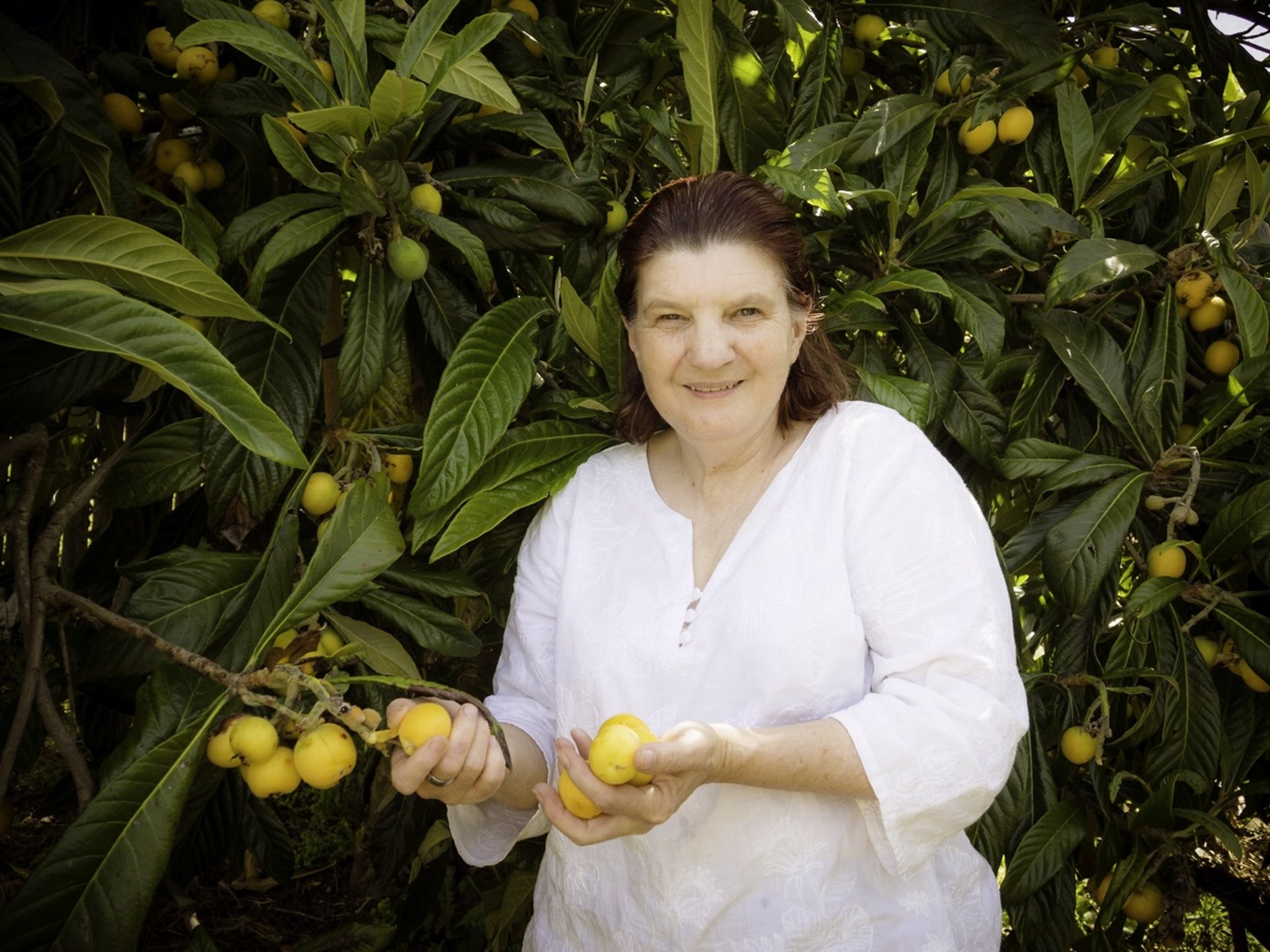
A SHORT TALE
This is the tale of Yvonne Gluyas — caterer, performance poet, fiction writer, mother of a grown-up family and... a Tasmanian. It's a short tale, more a record of my recent visit to her ridgetop home high above Launceston.
Yvonne is Tasmanian by choice, not birth, being a country girl from Young, NSW, who spent time as a child living at the RAAF base at Penang, who came of age in the heady days of the youth movement as 1969 gave way to the following decade, who as a mature age student completed a degree in communications at UTS and a masters' degree in writing at the University of Tasmania and who, today, enjoys her self-employed lifestyle as a cook and caterer.
Her's is a one-person catering business, Yvonne’s Kitchen. That's her livelihood, in between her fiction writing and her appearances as a performance poet, that is. When I learned she had become a performance poet, and when I had finally figured out what that was, I realised Yvonne had found a means of artistic expression that truly suits her character. I think you could describe Yvonne as assertively self-directed.
Below: Yvonne (right) with her French homestay assistant, Fanny.
This is the tale of Yvonne Gluyas — caterer, performance poet, fiction writer, mother of a grown-up family and... a Tasmanian. It's a short tale, more a record of my recent visit to her ridgetop home high above Launceston.
Yvonne is Tasmanian by choice, not birth, being a country girl from Young, NSW, who spent time as a child living at the RAAF base at Penang, who came of age in the heady days of the youth movement as 1969 gave way to the following decade, who as a mature age student completed a degree in communications at UTS and a masters' degree in writing at the University of Tasmania and who, today, enjoys her self-employed lifestyle as a cook and caterer.
Her's is a one-person catering business, Yvonne’s Kitchen. That's her livelihood, in between her fiction writing and her appearances as a performance poet, that is. When I learned she had become a performance poet, and when I had finally figured out what that was, I realised Yvonne had found a means of artistic expression that truly suits her character. I think you could describe Yvonne as assertively self-directed.
Below: Yvonne (right) with her French homestay assistant, Fanny.
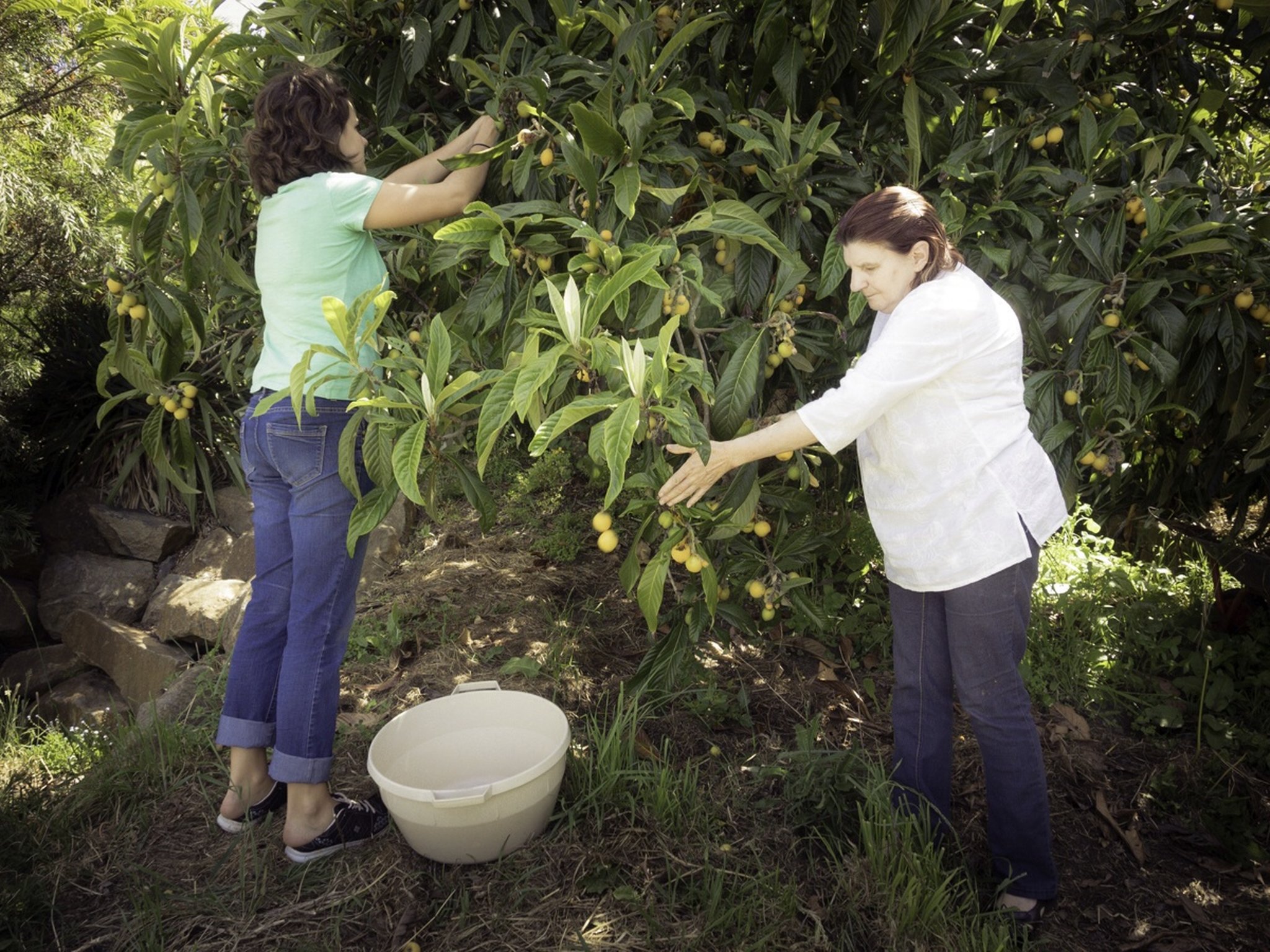
HOME ON THE RIDGE
Here in northern Tasmania Yvonne lives in a house she had built on the West Launceston ridge above Launceston. The land was once a commercial orchard and I remember when, on my first visit here, I found all these old, heritage variety apple and pear trees.
Here in northern Tasmania Yvonne lives in a house she had built on the West Launceston ridge above Launceston. The land was once a commercial orchard and I remember when, on my first visit here, I found all these old, heritage variety apple and pear trees.

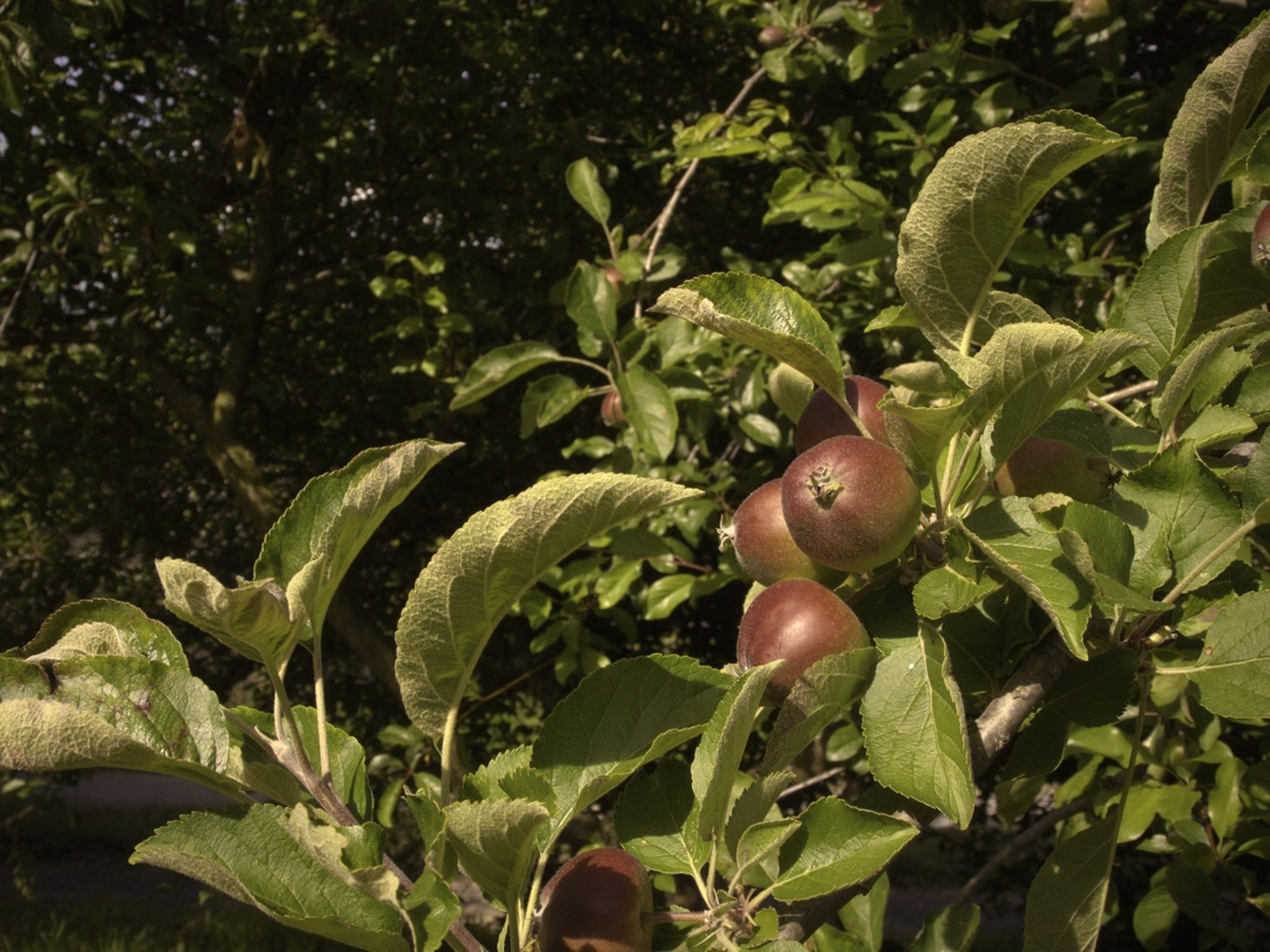
Harvest completed, next step is to turn the loquats into jam.
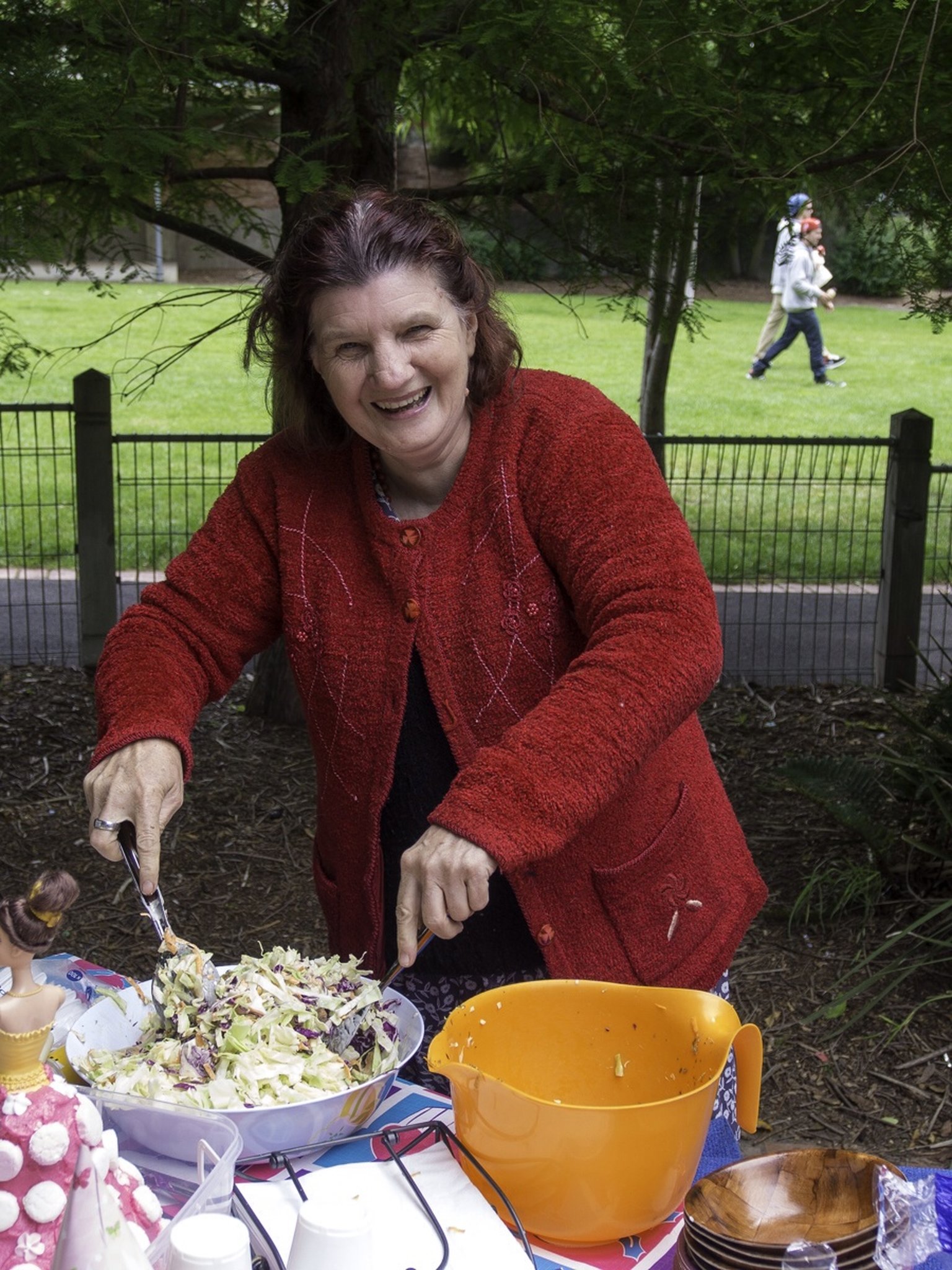
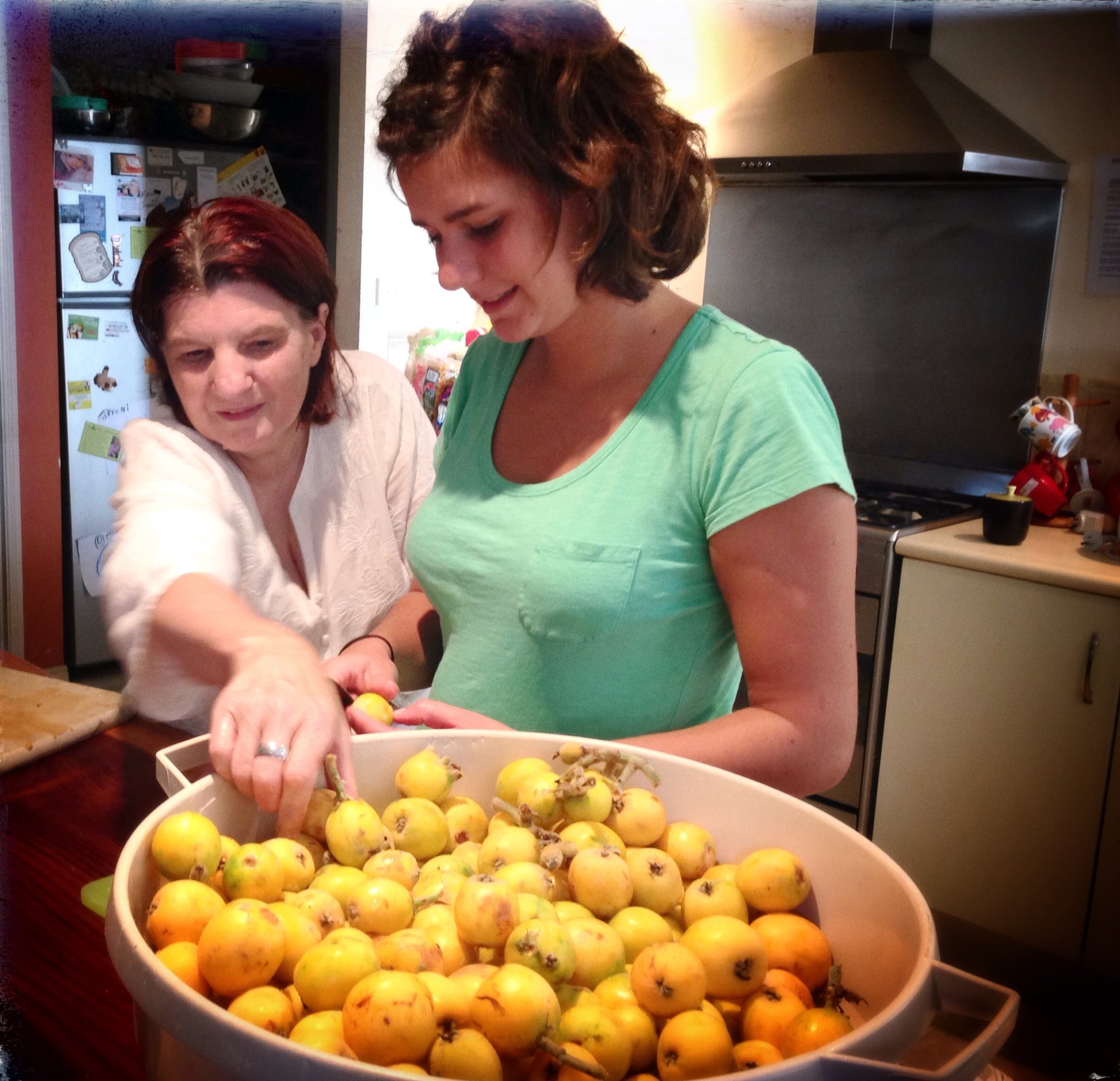
A CASE OF CHARACTER CHANGE
When I visited briefly in 2007 she took me by the hand. "Come and see my vegetable garden", she demanded. "A New Zealand WWOOFer built it for me". (WWOOFer: Willing Worker On Organic Farms, a workstay scheme).
There it was among the remnant fruit trees, a little garden with a few rows of leafy greens and clusters of small red tomatoes, now in need of replanting. This took me by surprise as I had never thought of Yvonne as an organic girl, especially one that grows food. I suspected a case of profound character change.
The next time I visited it was "Come and see my chooks". And there they were, a bunch of feathery creatures in a pen with a chook house with, emblazoned on a sign above the entrance, 'Cluckingham Palace'. That profound character change turns out to have been permanent and it has only become more entrenched.
Below: Sustainability educator and online systems support, Fiona Campbell, with Evie Leslie, my Tasmanian granddaughter, at Cluckingham Palace.
When I visited briefly in 2007 she took me by the hand. "Come and see my vegetable garden", she demanded. "A New Zealand WWOOFer built it for me". (WWOOFer: Willing Worker On Organic Farms, a workstay scheme).
There it was among the remnant fruit trees, a little garden with a few rows of leafy greens and clusters of small red tomatoes, now in need of replanting. This took me by surprise as I had never thought of Yvonne as an organic girl, especially one that grows food. I suspected a case of profound character change.
The next time I visited it was "Come and see my chooks". And there they were, a bunch of feathery creatures in a pen with a chook house with, emblazoned on a sign above the entrance, 'Cluckingham Palace'. That profound character change turns out to have been permanent and it has only become more entrenched.
Below: Sustainability educator and online systems support, Fiona Campbell, with Evie Leslie, my Tasmanian granddaughter, at Cluckingham Palace.
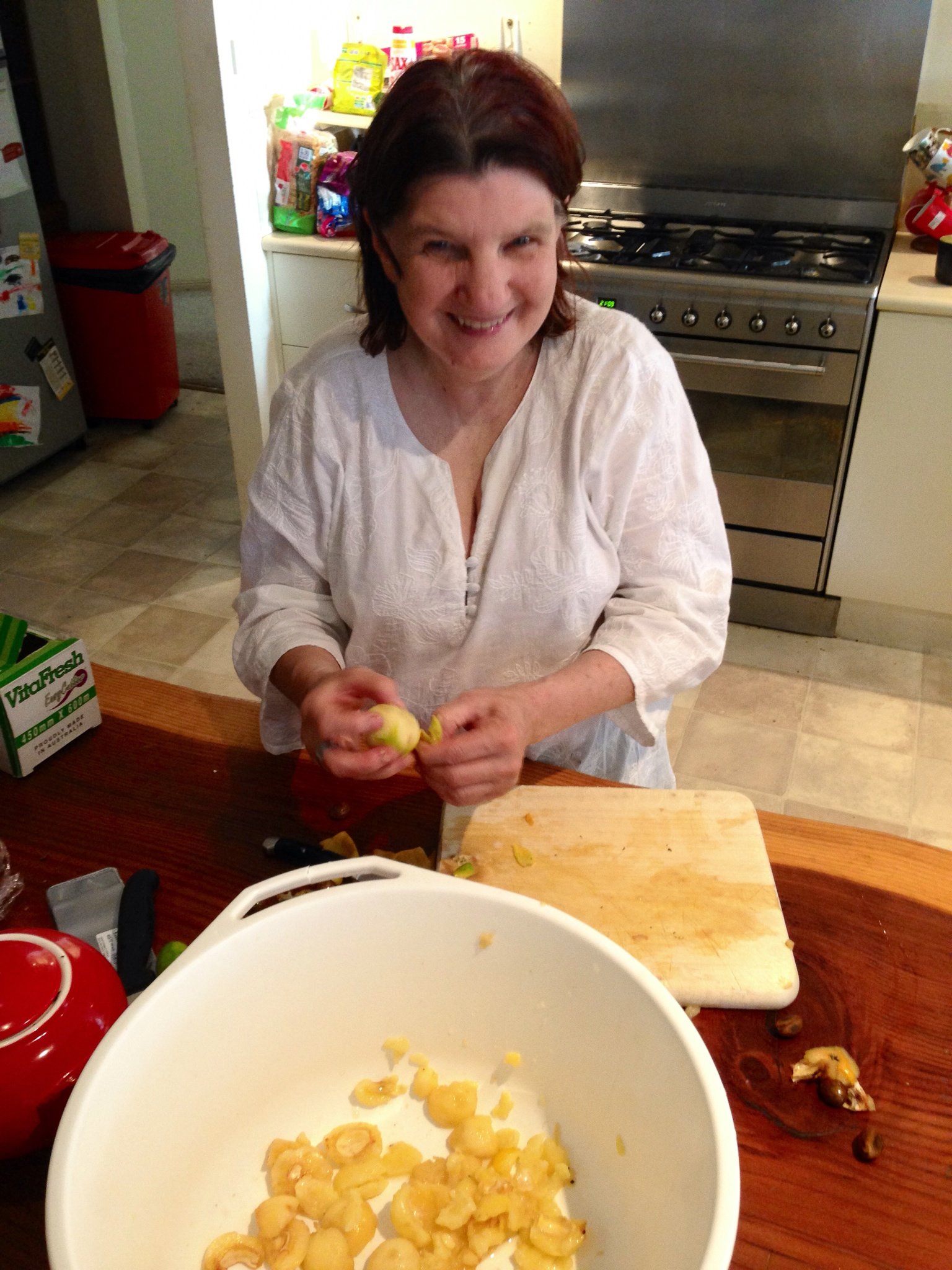
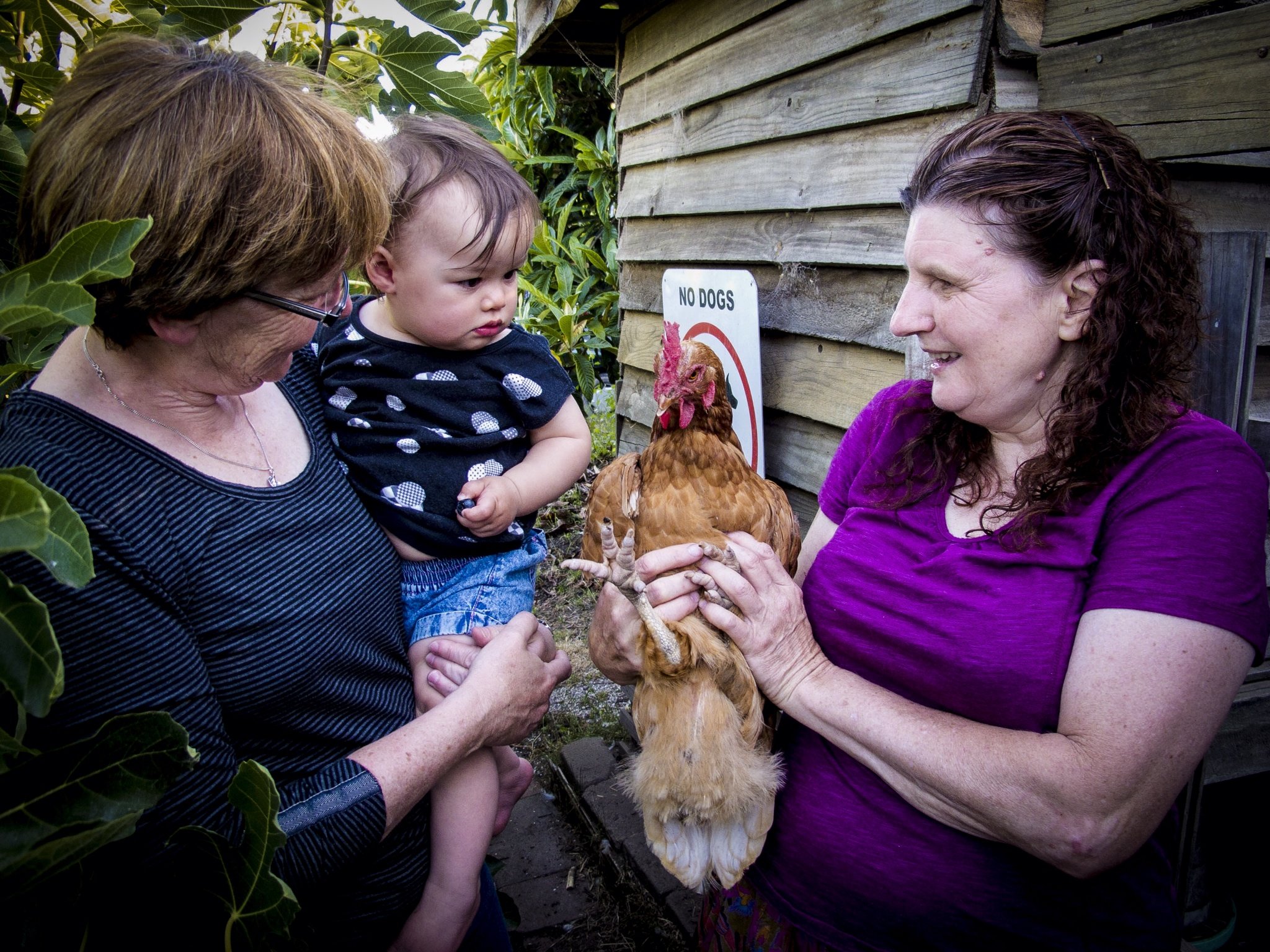
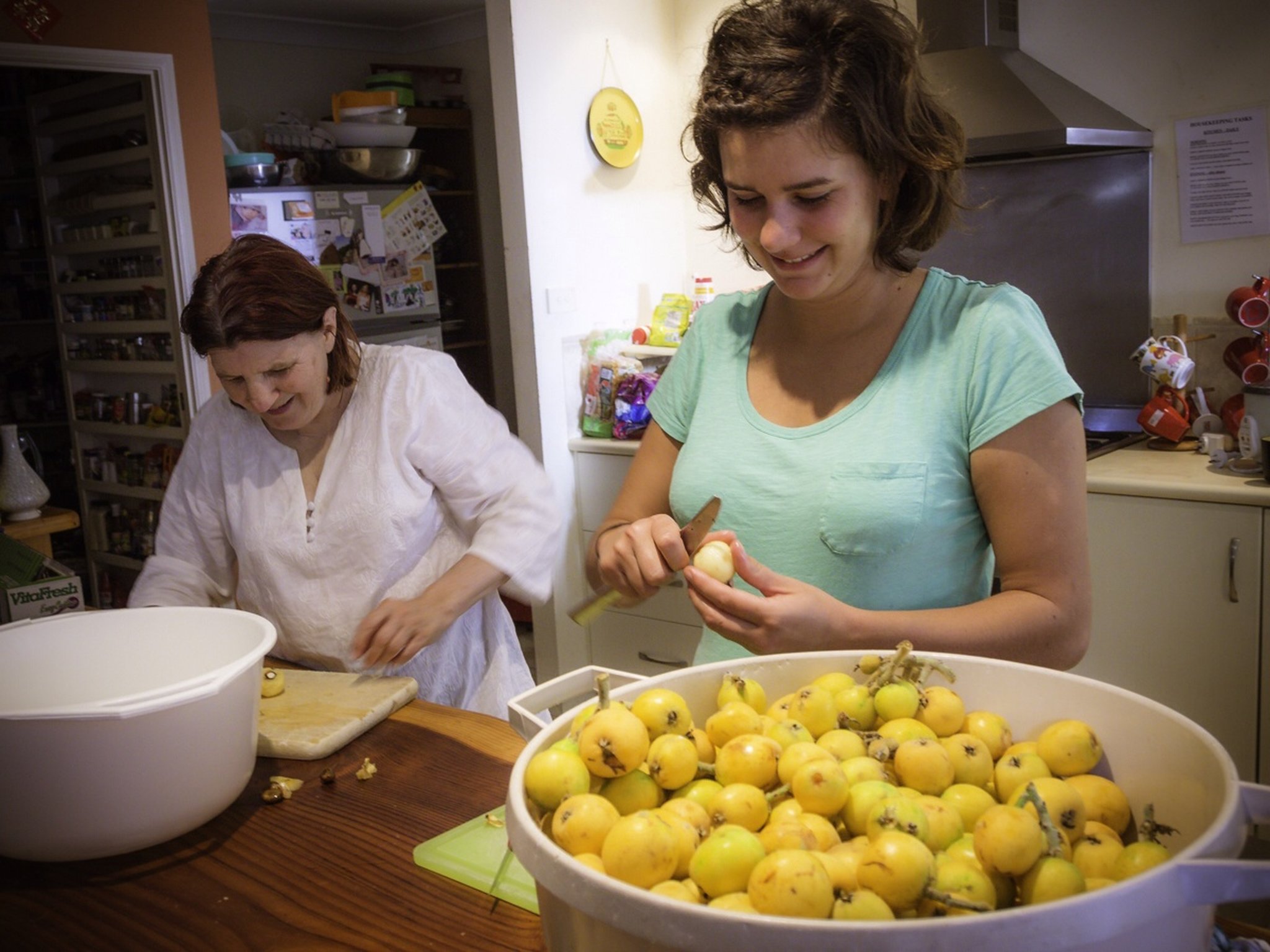
Above: (left) With Yvonne (seen at right with bird) is Launceston lawyer, Charmaine Gibson, introducing her granddaughter, Mimi Grayson, to one of Yvonne's chooks.
(right) Yvonne with one of her egg-producing avifauna. Yvonne claims to have taught one of the chooks to sit on command, however I think it was the animal's innate behaviour that led it to do this, or perhaps it was cowering from Yvonne's command.
CHAOS
Thinking back, I can’t recall a time when Yvonne actually stood still for any length of time. As she says, she gets things done through chaos.
When she's busy in the kitchen there's this constant flow of movement... stuff being retrieved from refrigerator and cupboard, bowls of this or that being whipped or churned, food being sliced and diced then fed into a steaming saucepan and, something Yvonne is good at, people to organise.
It's a chaos of movement and stuff everywhere, or so it seems to a non-cook.
(right) Yvonne with one of her egg-producing avifauna. Yvonne claims to have taught one of the chooks to sit on command, however I think it was the animal's innate behaviour that led it to do this, or perhaps it was cowering from Yvonne's command.
CHAOS
Thinking back, I can’t recall a time when Yvonne actually stood still for any length of time. As she says, she gets things done through chaos.
When she's busy in the kitchen there's this constant flow of movement... stuff being retrieved from refrigerator and cupboard, bowls of this or that being whipped or churned, food being sliced and diced then fed into a steaming saucepan and, something Yvonne is good at, people to organise.
It's a chaos of movement and stuff everywhere, or so it seems to a non-cook.
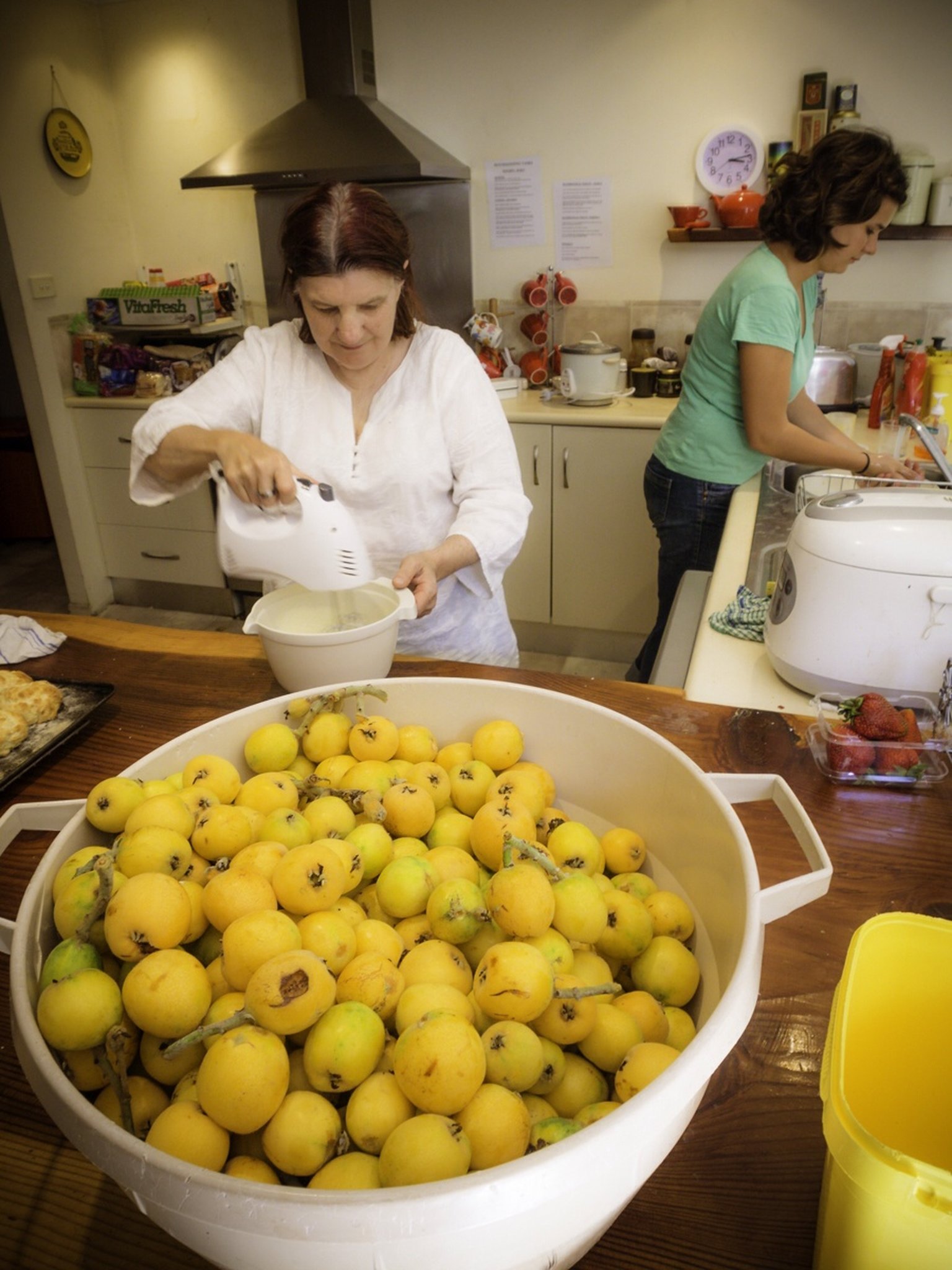
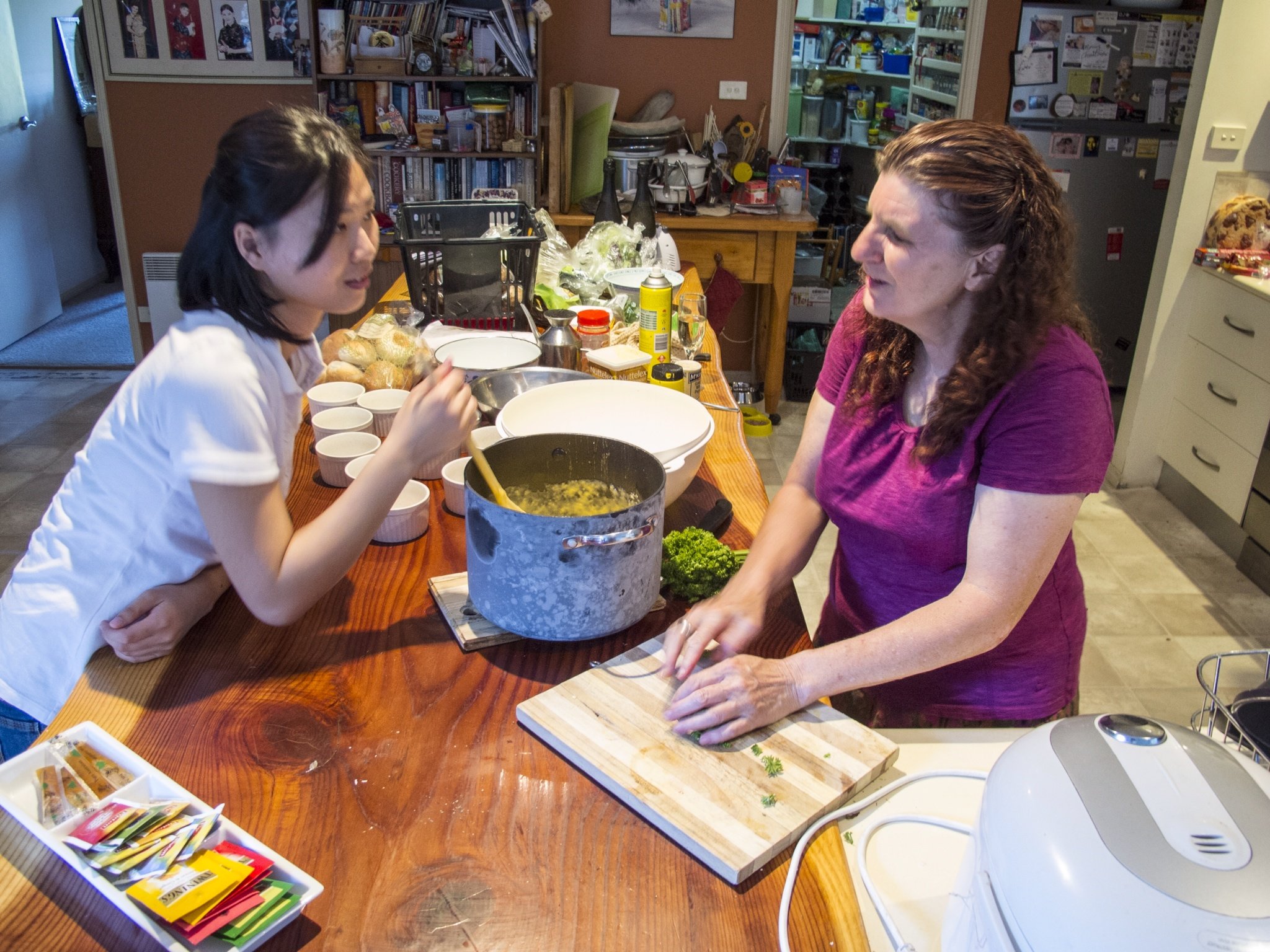
Above: Deseeding the loquats is something of a tedious task made easier by the convivial chatter of those doing the work.
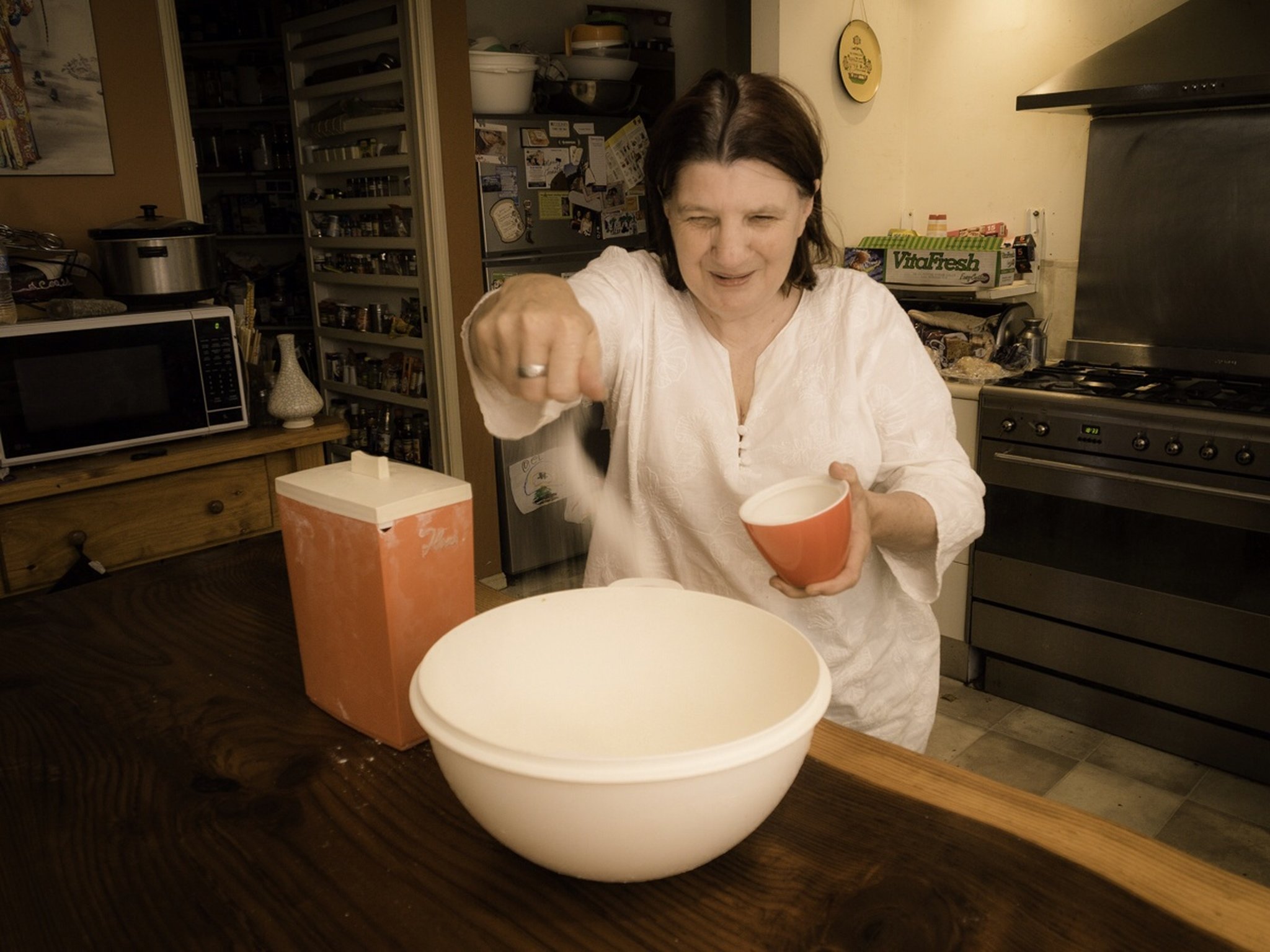
Some of Yvonne's trees furnish the fruit that she turns into home-bottled jams. Other fruit she buys, like the $5 box of bananas she was about to turn into banana jam when I visited (she knows where to shop and who to talk to). That's what happened to the loquats we picked from her tree and what happened to the plums she and Fanny harvested the following week.
I have a jar of that banana jam, bearing her Quambi Jai label, in our food cupboard and I'm looking forward to opening it soon, but that’s after I finish her jar of loquat jam.
I have a jar of that banana jam, bearing her Quambi Jai label, in our food cupboard and I'm looking forward to opening it soon, but that’s after I finish her jar of loquat jam.
How to make scones
Flour, eggs and other stuff is mixed into a large bowl. This is beaten until the mixture achieves the consistency of a thick paste. Handful-size scoops of this are taken and put on a metal tray that is placed into a heated oven. The scones are ready when they develop a light brown crust on top.
The main thing about making scones is eating them. And what better way to eat them than with than Yvonne's homemade jam and a dollop of fresh cream.
Flour, eggs and other stuff is mixed into a large bowl. This is beaten until the mixture achieves the consistency of a thick paste. Handful-size scoops of this are taken and put on a metal tray that is placed into a heated oven. The scones are ready when they develop a light brown crust on top.
The main thing about making scones is eating them. And what better way to eat them than with than Yvonne's homemade jam and a dollop of fresh cream.
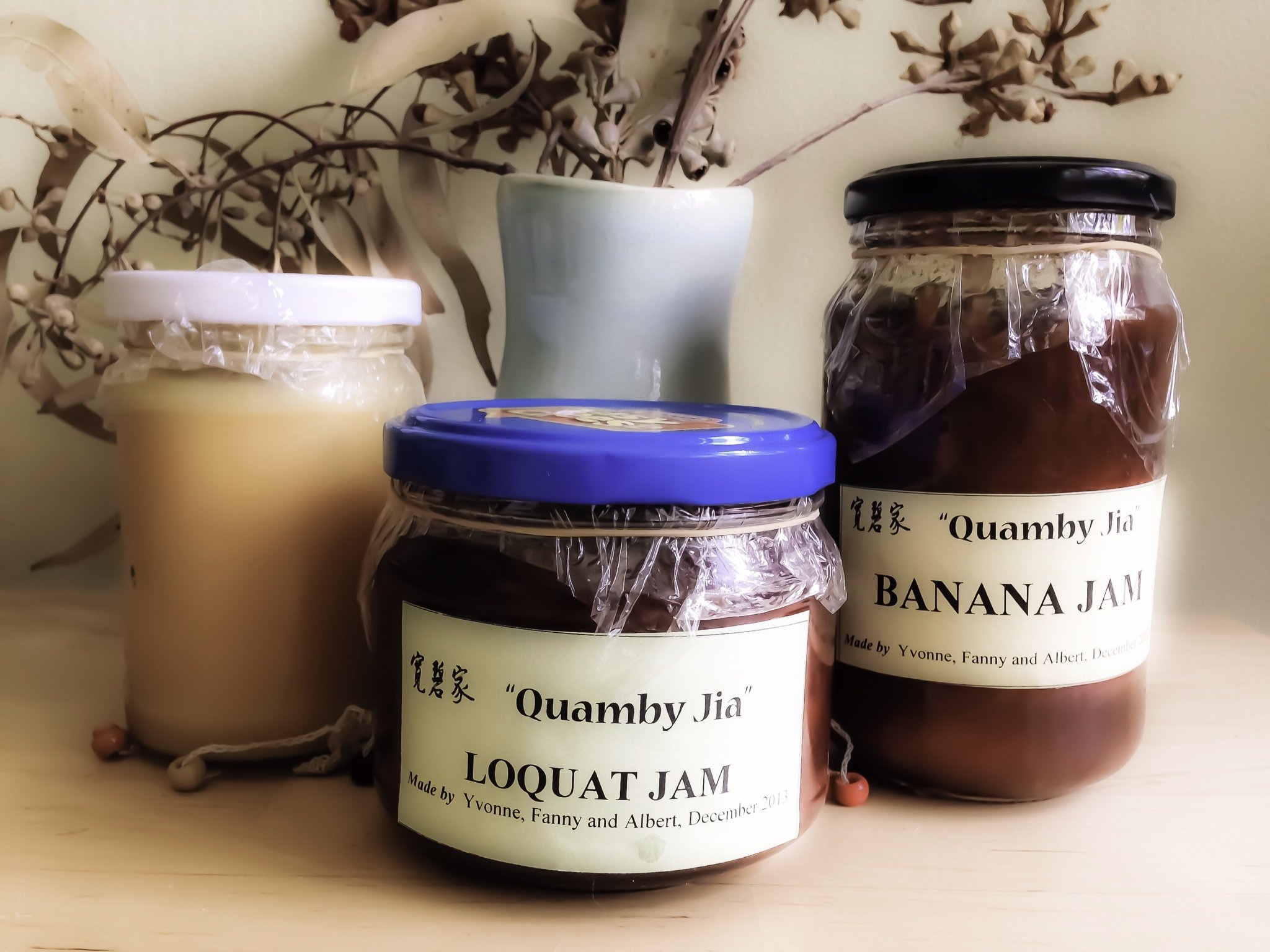
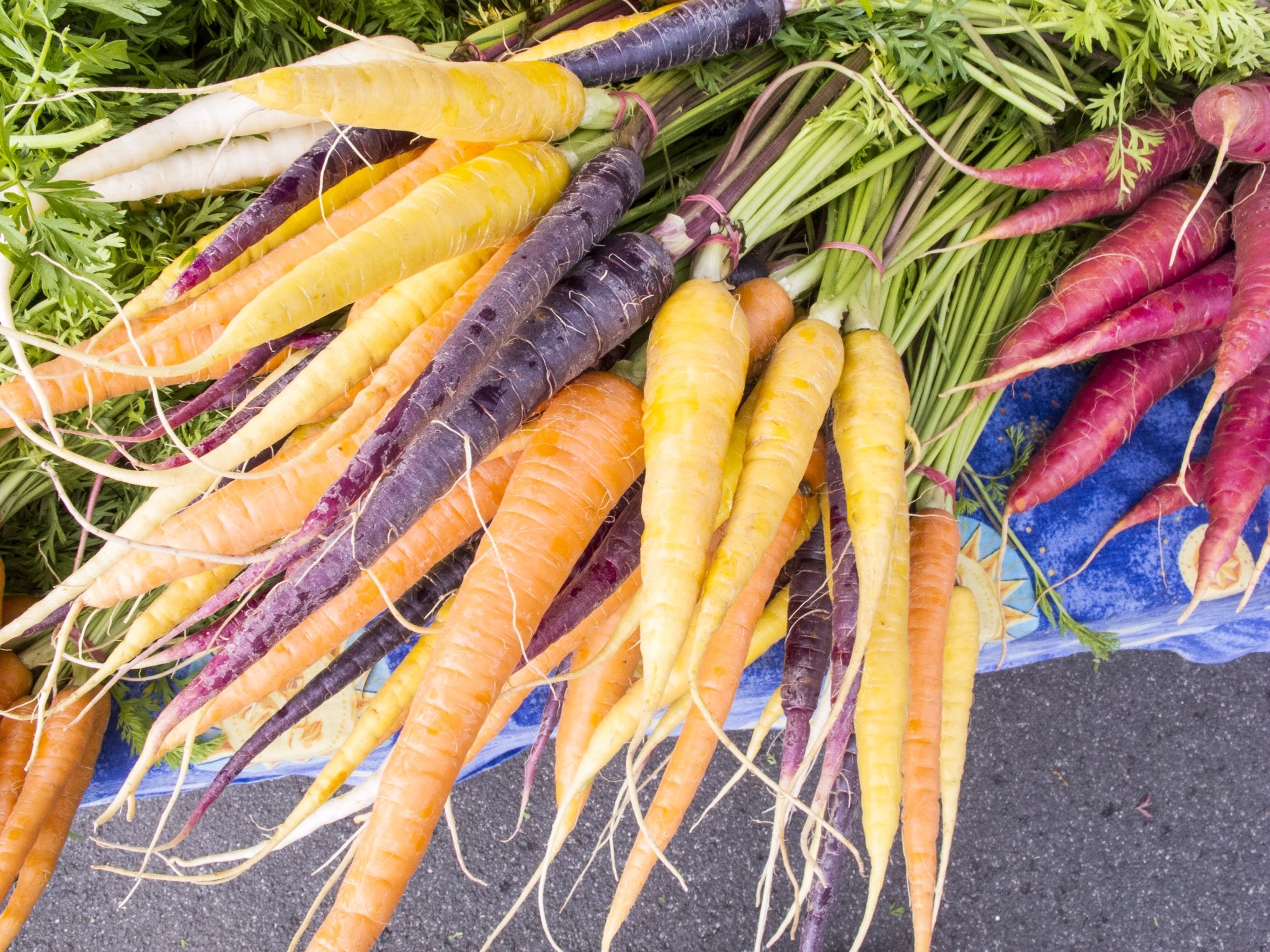
FRIENDS
Catering is an essentially social profession and that sociability spills over into other areas of Yvonne's life.
Below: An oversupply of tasty food, dessert, Tasmanian wine and good company — the ingredients of any of Yvonne's dinner parties.
Catering is an essentially social profession and that sociability spills over into other areas of Yvonne's life.
Below: An oversupply of tasty food, dessert, Tasmanian wine and good company — the ingredients of any of Yvonne's dinner parties.
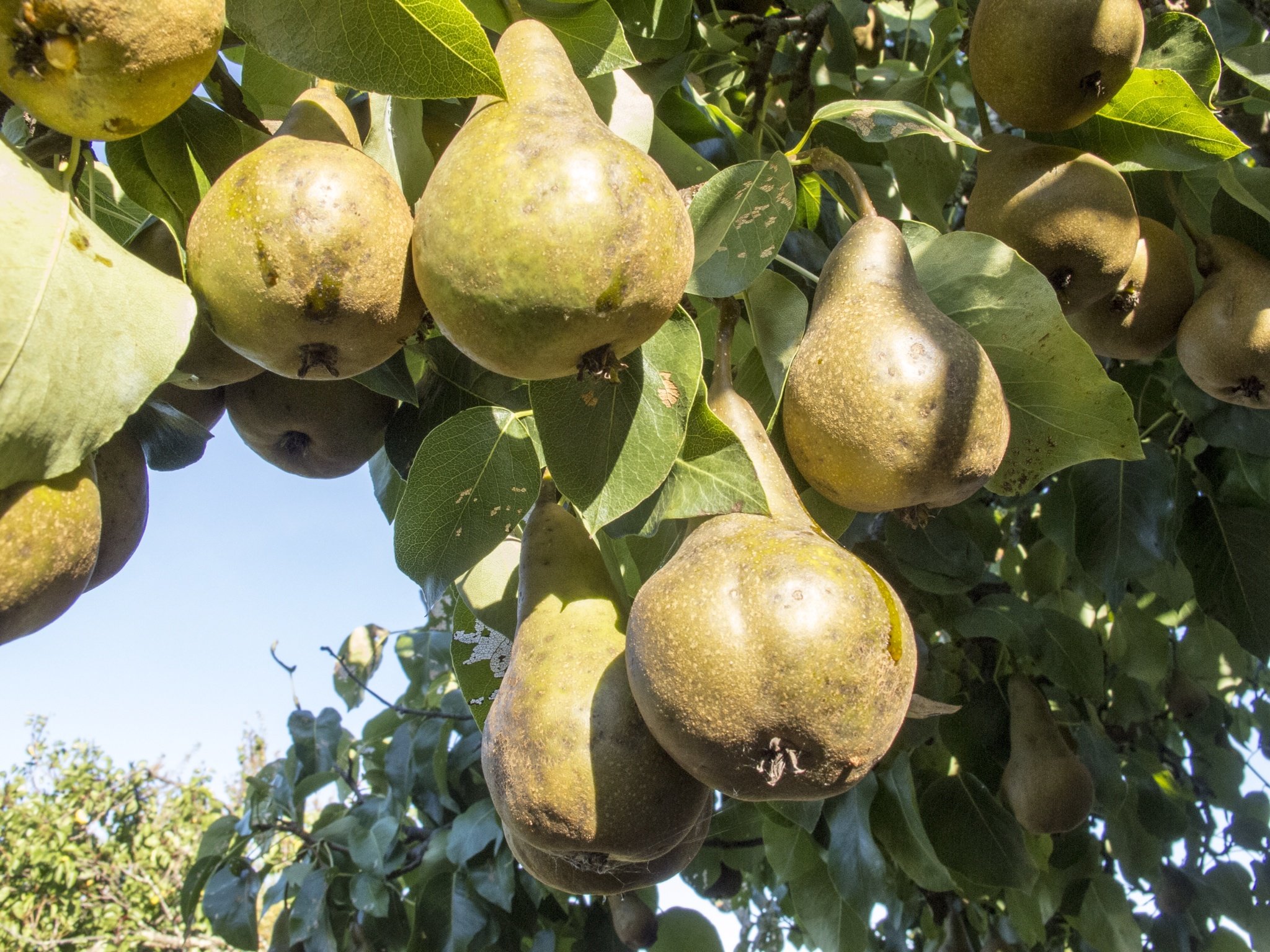
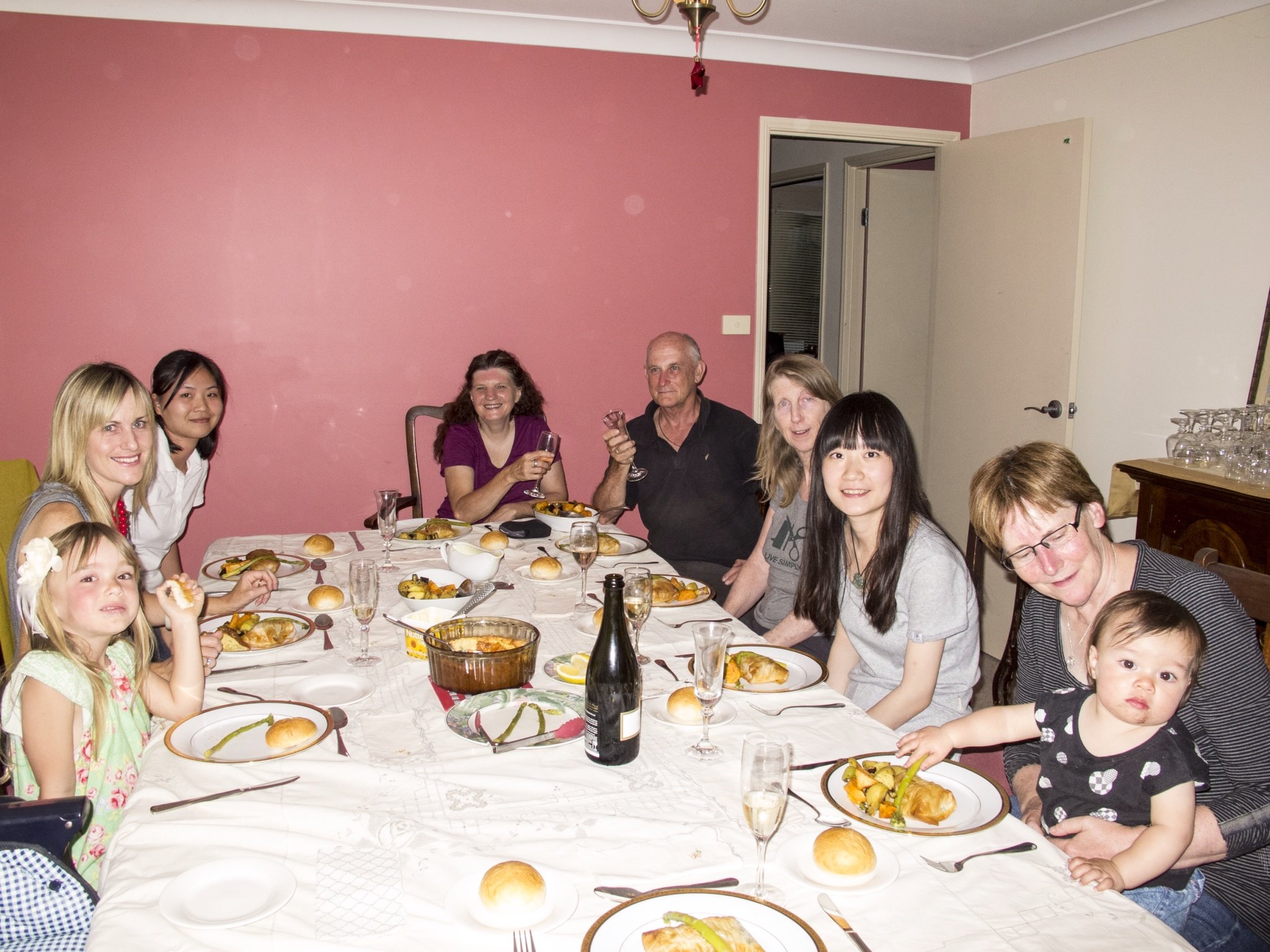
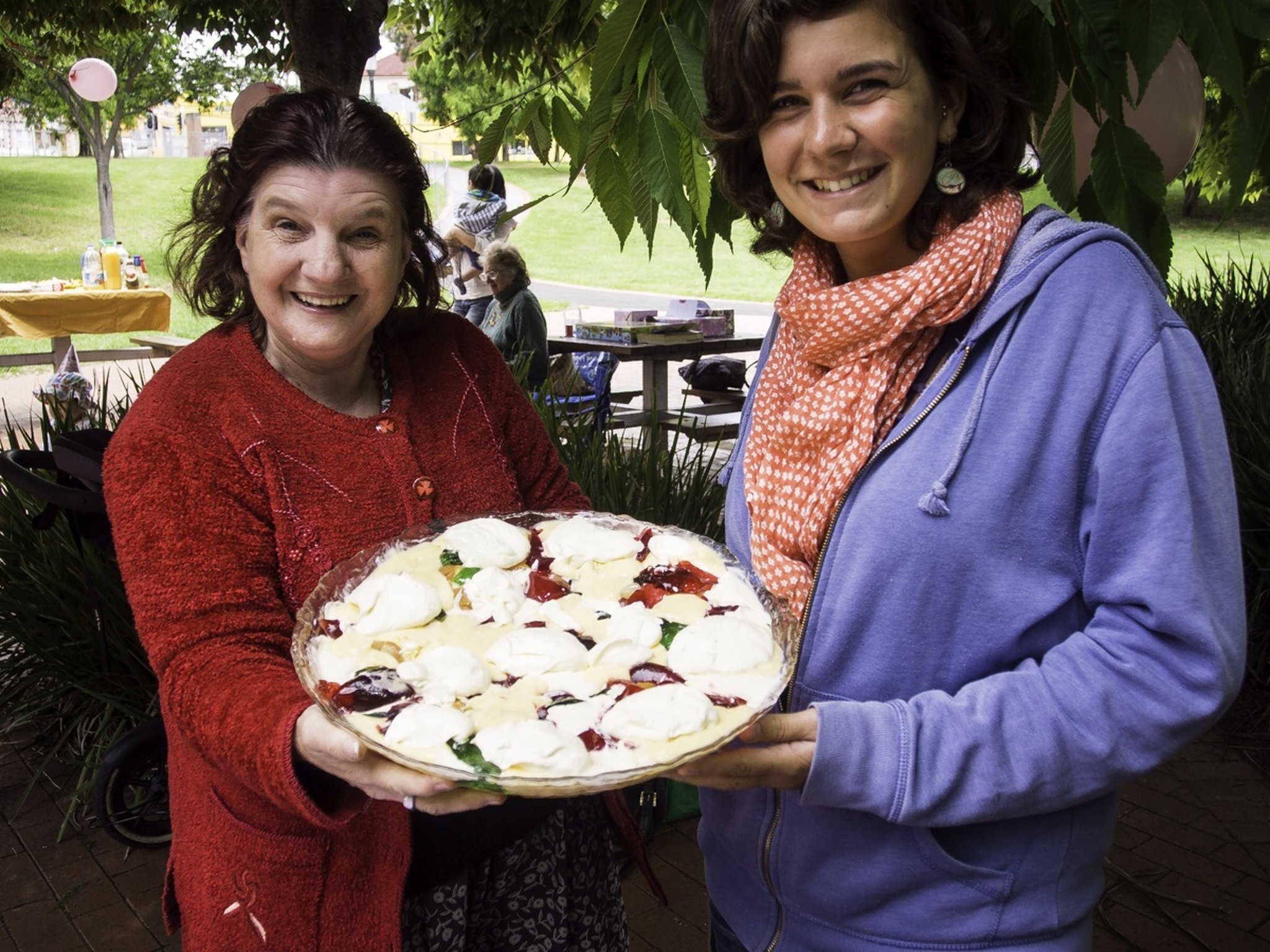
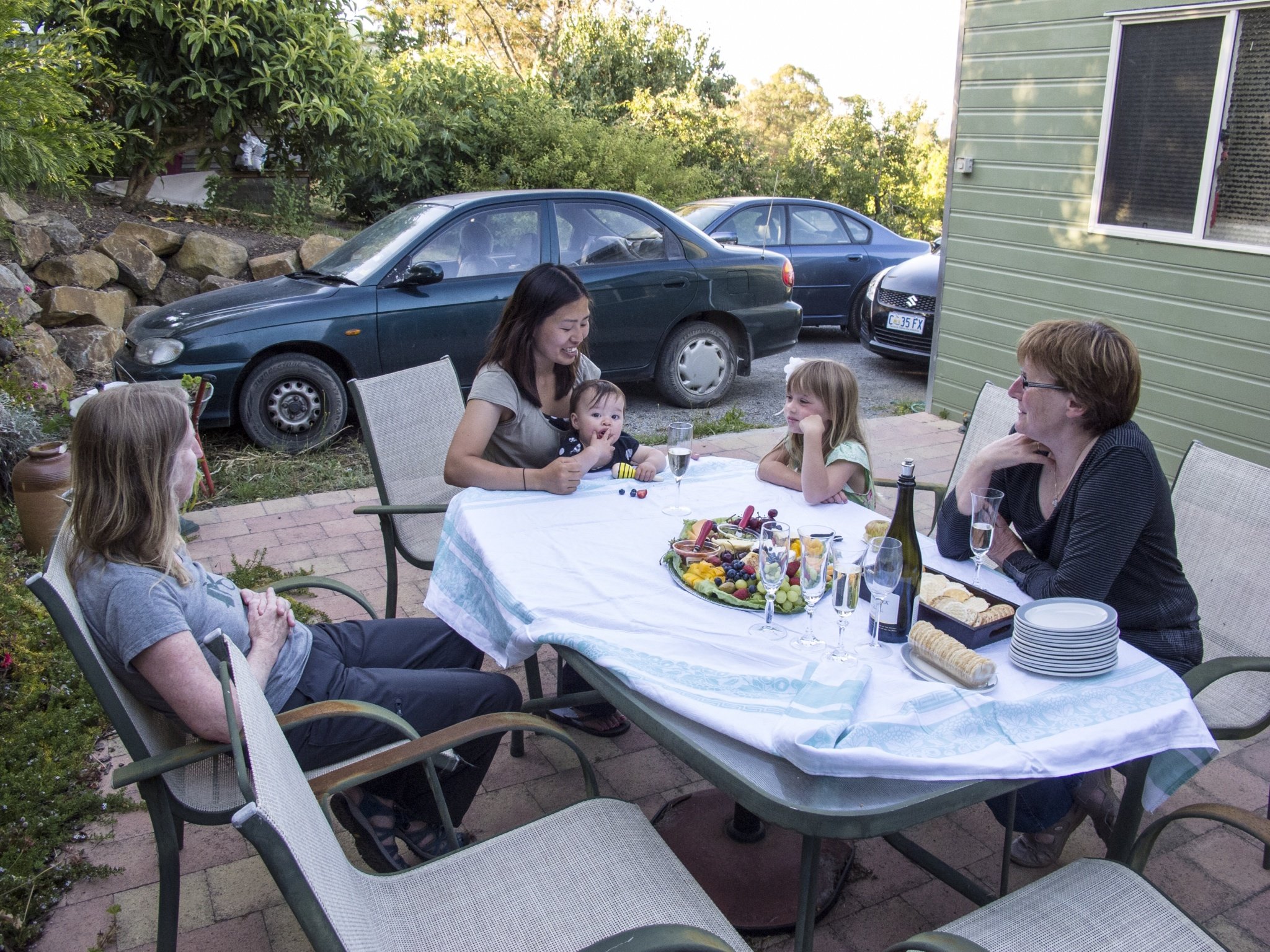
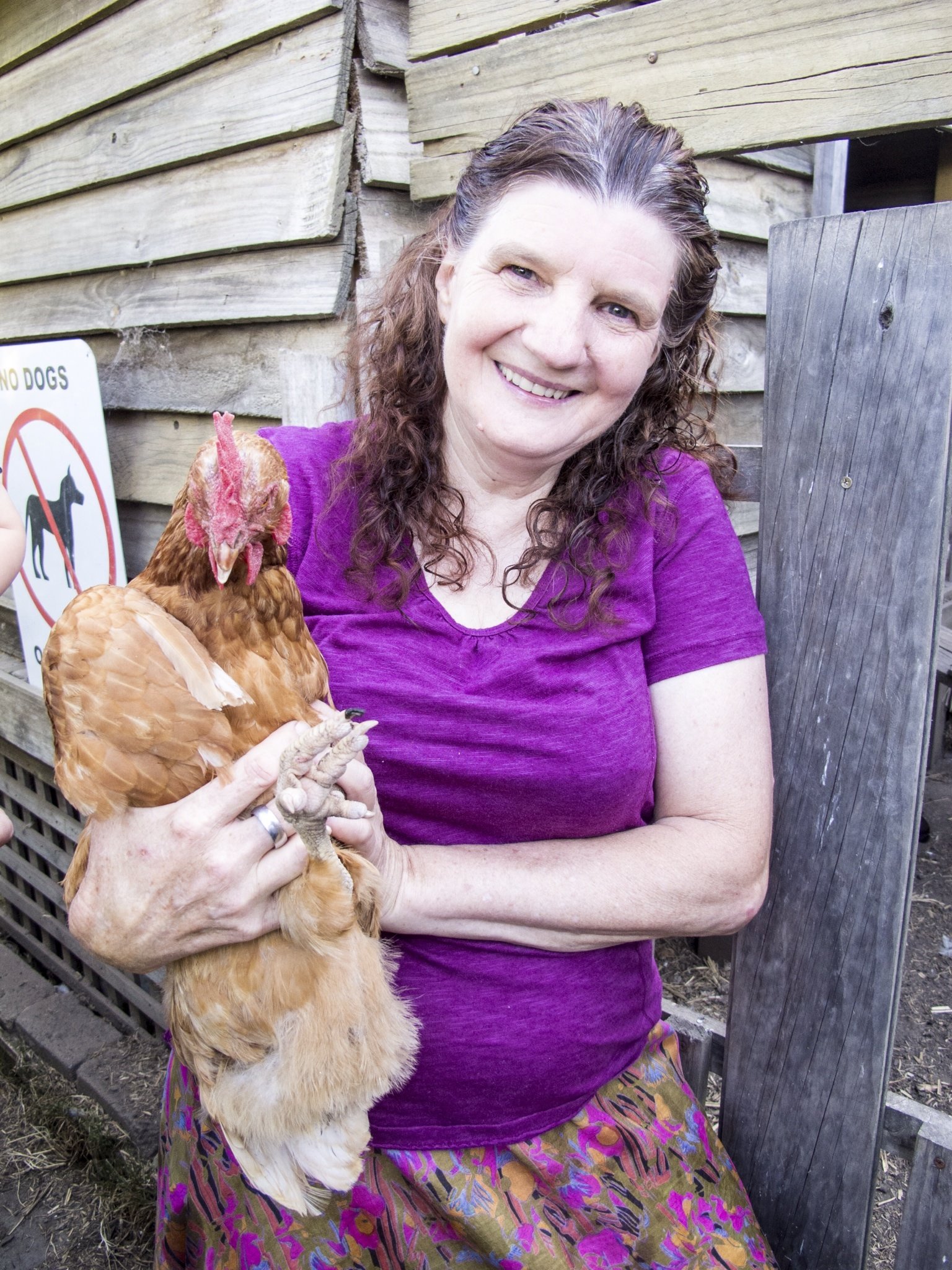
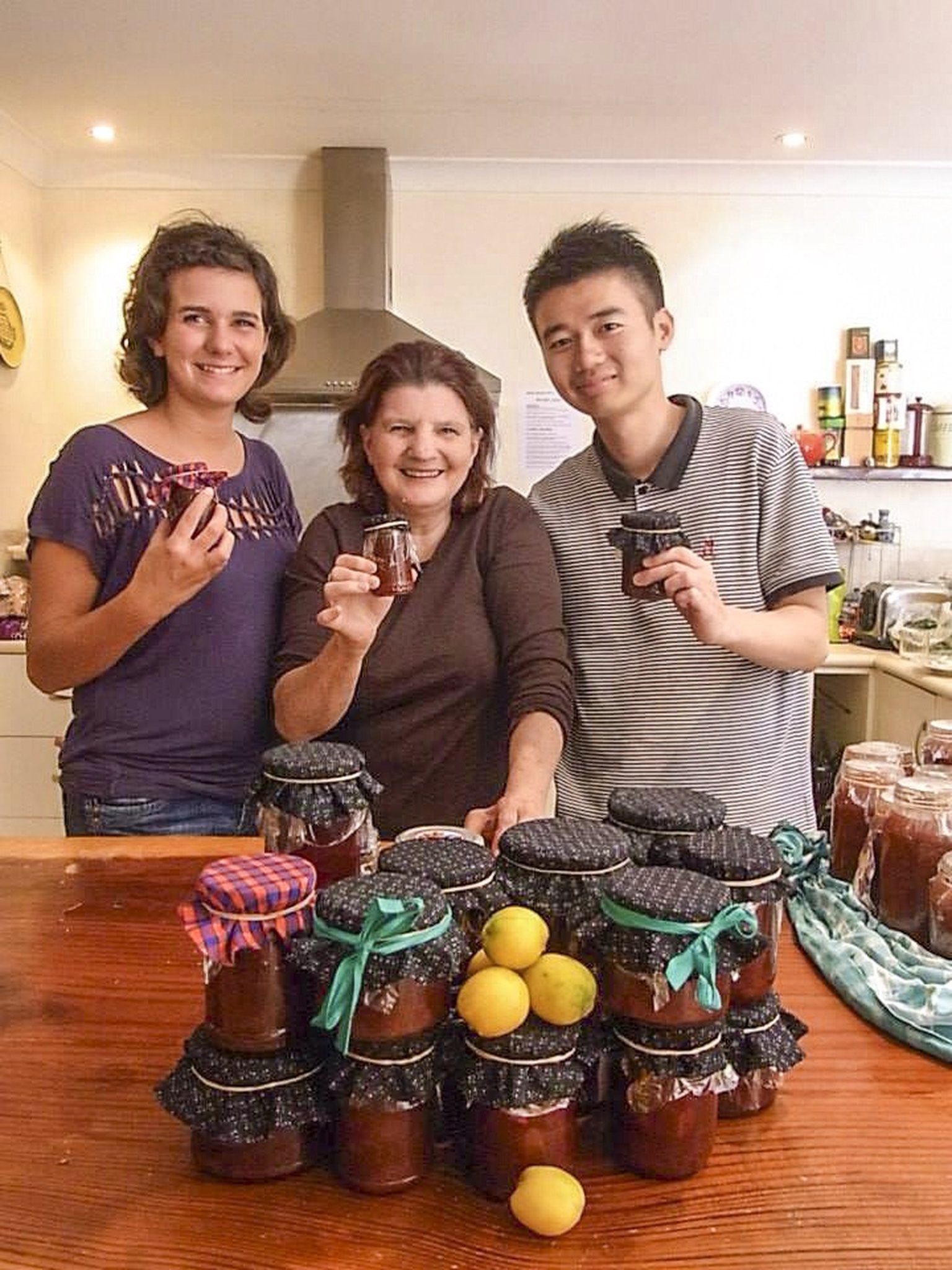
SCONES
I arrived in West Launceston just in time to watch a batch of scones being made by Yvonne and her helper, Fanny.
Fanny, a young French woman, has been living in Yvonne's house and assisting her in her work. They make a great team, somehow coordinating their work to turn out tasty food, preserves, jams and whatever else Yvonne thinks up to cook.
I arrived in West Launceston just in time to watch a batch of scones being made by Yvonne and her helper, Fanny.
Fanny, a young French woman, has been living in Yvonne's house and assisting her in her work. They make a great team, somehow coordinating their work to turn out tasty food, preserves, jams and whatever else Yvonne thinks up to cook.
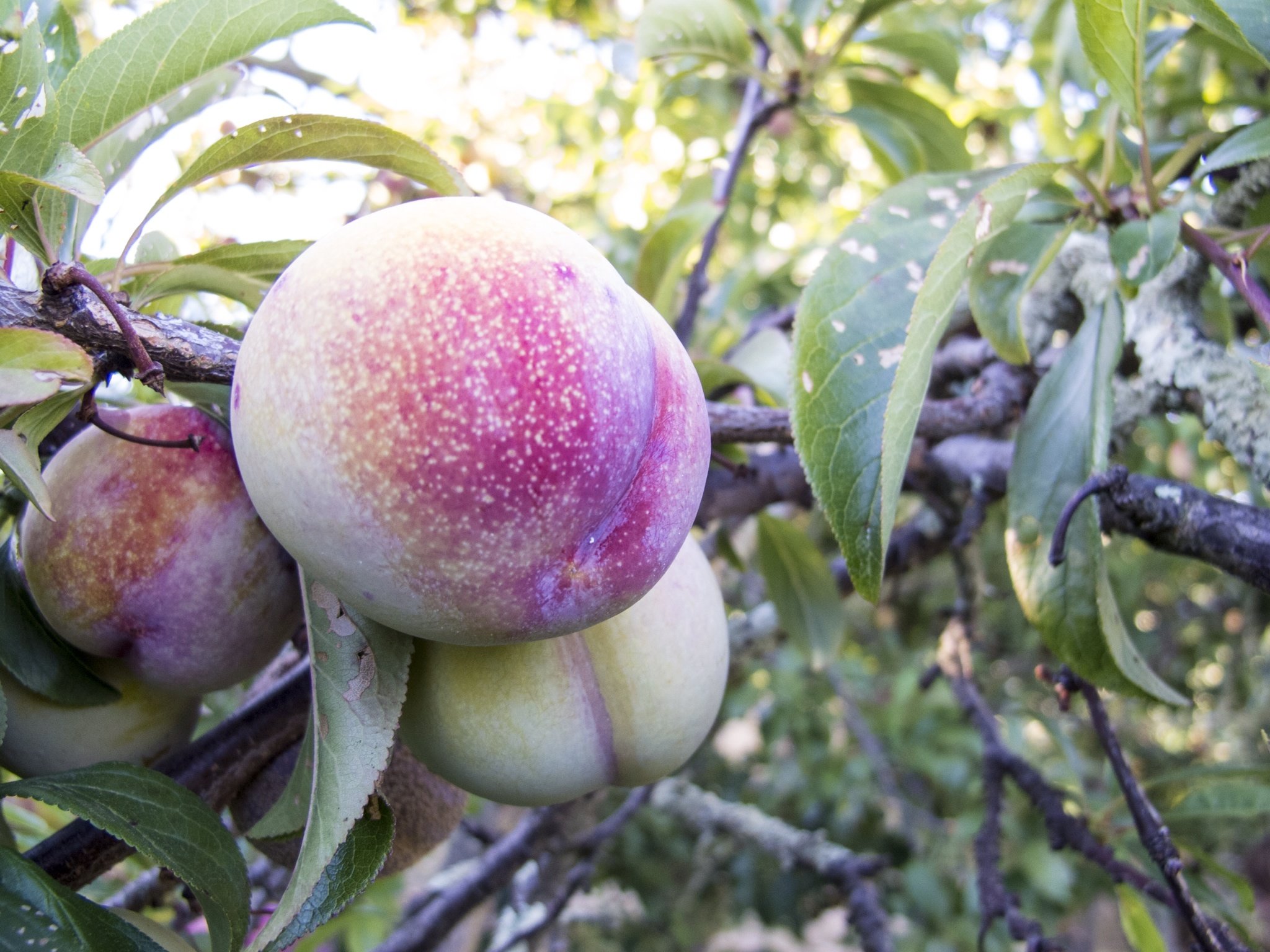
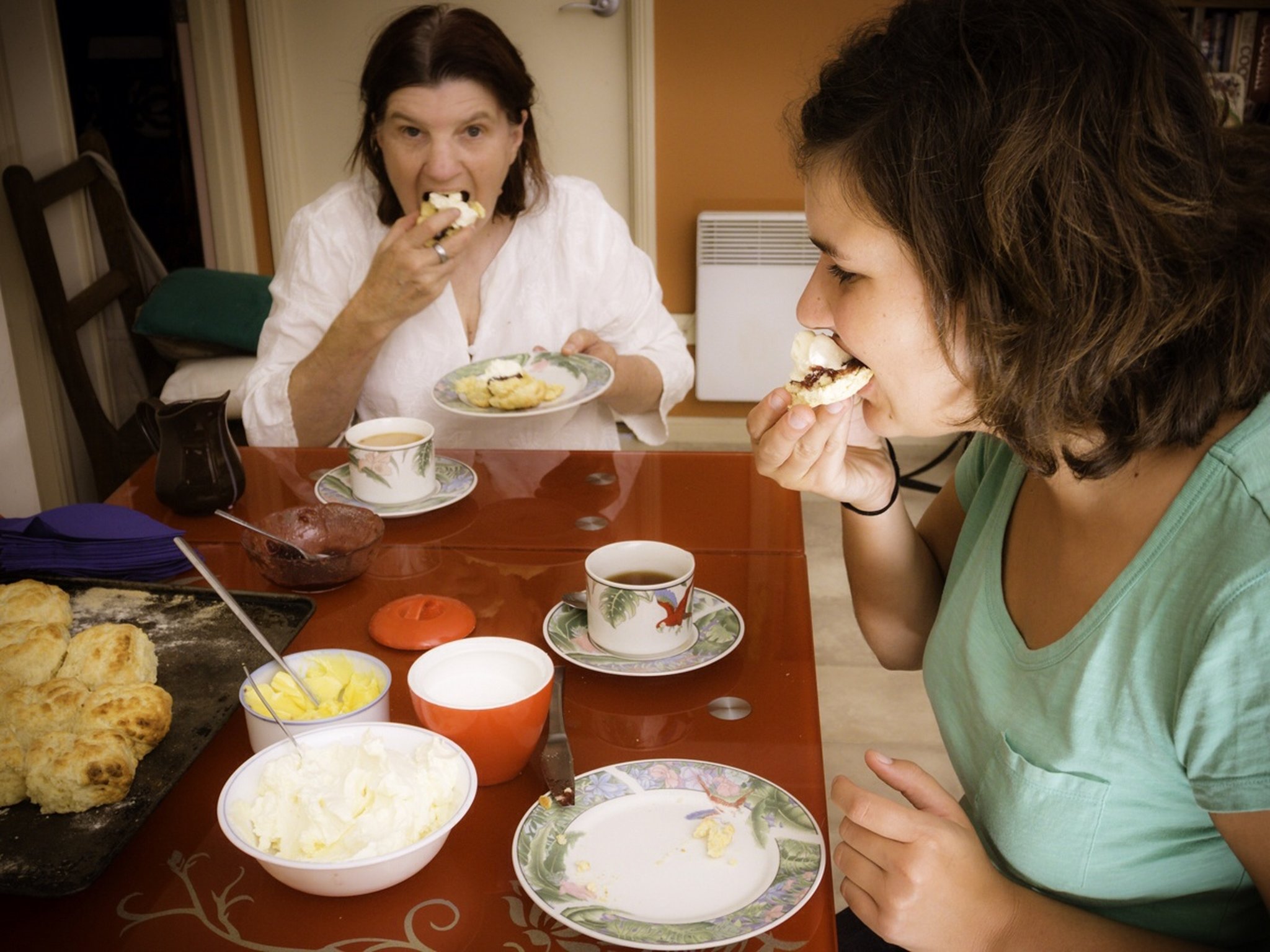
Above: Fruit trees in Yvonne's garden, the remnant of the orchard that once occupied these uplands.
It's Yvonne's Kitchen, her catering business, that keeps her busy. Cooking, delivering, serving, cleaning up... it's constant but it's an independent livelihood.
It's Yvonne's Kitchen, her catering business, that keeps her busy. Cooking, delivering, serving, cleaning up... it's constant but it's an independent livelihood.
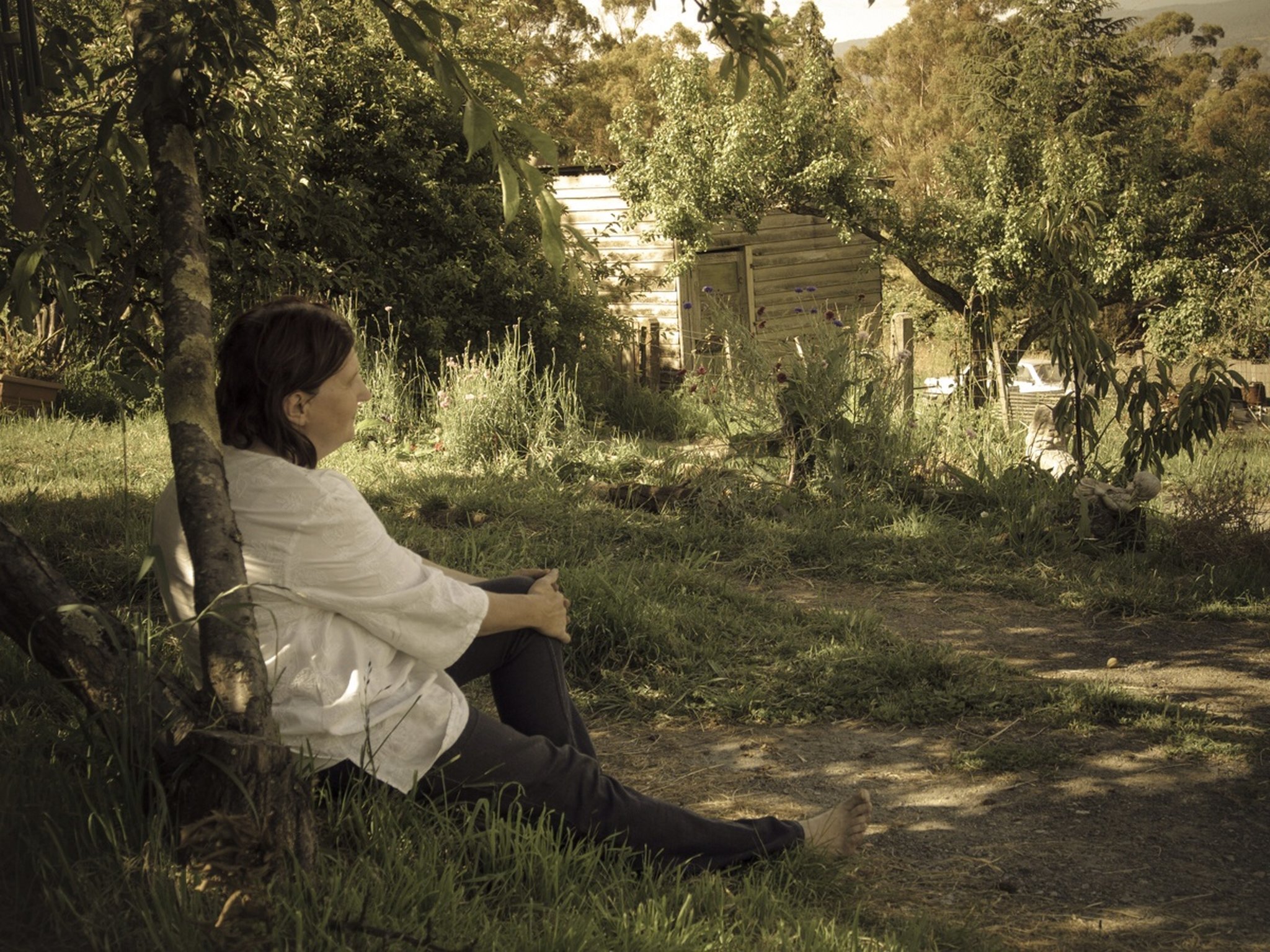
DAY'S END
Harvesting, cooking, catering, writing, performance poetry... this is the life of a woman who just can’t leave writing and food alone. For Yvonne, food calls out to be cooked, baked, preserved, eaten.
When there in December, I asked about her plans for the coming year. Her reply was simple: "Food, friends and fun!".
Harvesting, cooking, catering, writing, performance poetry... this is the life of a woman who just can’t leave writing and food alone. For Yvonne, food calls out to be cooked, baked, preserved, eaten.
When there in December, I asked about her plans for the coming year. Her reply was simple: "Food, friends and fun!".
It's interesting that when Yvonne plans one of her shared meals that her brother Colin (left) or son Kell (right) can turn up. That's Colin's restored 1960s VW Kombi ute.
